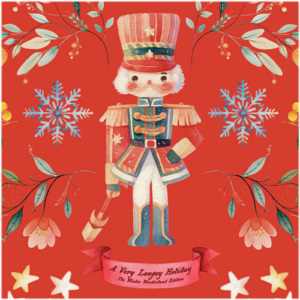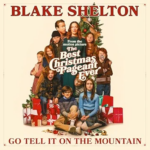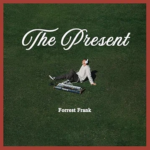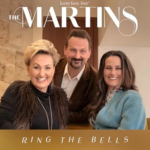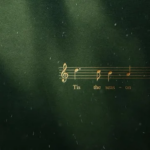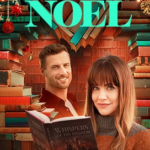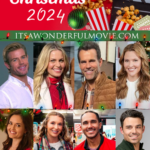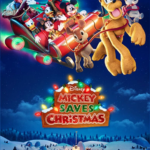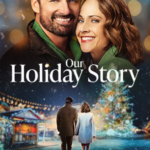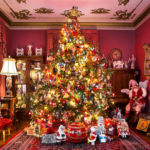 ORIGINS of Your Favorite CHRISTMAS SONGS
ORIGINS of Your Favorite CHRISTMAS SONGS
Newly Expanded – The stories behind who wrote
62 of your favorite holiday classics
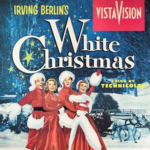






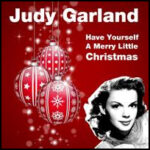



By Don Stone
We hear them every year. Most, we know all the words to and have sung since we were children. Christmas songs have become so ingrained in our memory that we never think about or wonder how they came to be such a natural part of the Christmas season.
It’s an interesting mix of traditional hymns from the middle ages to pop songs from America’s favorite singers.
We dug down deep to find how 58 of the most beloved songs came to be such a major and emotional part of our personal lives and culture, adding a few new ones each year… starting with “Angels We Have Heard On High,” and “All I Want For Christmas.”
![]()
 ~ All I Want For Christmas Is My Two Front Teeth ~
~ All I Want For Christmas Is My Two Front Teeth ~
“All I Want for Christmas Is My Two Front Teeth,” was first recorded by popular bandleader Spike Jones in 1948 when it became a top ten hit.
The song was written by music teacher Don Gardner in 1944 when he was filling in for his wife in her second-grade class in Smithtown, New York.
He noticed that several of the kids were singing with lisps. When they smiled, he discovered that 16 of the 22 children had one or more of their front teeth missing, causing the lisps.
Inspired, he wrote “All I Want for Christmas Is My Two Front Teeth” in about an hour as a fun song for the school’s Christmas pageant. The Christmas novelty song featured a child voicing the lisp with each “s’ as a ‘th’.
A publishing company wanted to release it. But, after first, Gardner didn’t think much of it saying “My God, that won’t even sell 100 copies.”
He was very wrong as it sold two million copies in two months hitting Billboard’s top ten list in both 1948 and 1949 when it made #1 with the royalties setting his family up for life.
See Spike Jones performing “All I Want For Christmas Is My Two Front Teeth in 1948” – Click Here
![]()
Read The Lyrics For “All I Want For Christmas Is My Two Front Teeth” with The Chipmunks – Click Here
![]()
“All I Want for Christmas Is You” is a Christmas song by Mariah Carey. She co-wrote and co-produced it with Walter Afanasieff for her fourth studio album and first holiday album, “Merry Christmas” (1994). Columbia Records released it as the lead single from the album on October 29, 1994. The track is an uptempo love song that includes bell chimes, backing vocals and synthesizers.
It is Carey’s biggest international success, topping the charts in twenty-six countries including Australia, Canada, France and Germany. In 2019, it topped the Billboard Hot 100 for the first time, 25 years after its original release, thus breaking several records, including the longest trip to number one.
With an estimated sales of over 17 million copies, it is the best-selling Christmas single by a female artist and one of the best-selling singles of all time. By 2017, it had reportedly earned $60 million in royalties.
See The Original Official Video from 1994 For “All I Want For Christmas Is You” – Click Here
![]()
Read The Lyrics For “All I Want For Christmas” – Click Here
![]()
The earliest known printed version of “Angels We Have Heard On High” was in an 1842 French song book. It is generally sung to the hymn tune “Gloria”, a traditional French carol. The tune as we know it today was adapted and arranged by Edward Shippen Barnes.
The song’s subject is the birth of Jesus as narrated in the Gospel of Luke, specifically the scene in which shepherds outside Bethlehem encounter a multitude of angels singing and praising the newborn child. The lyrics are inspired by, but not an exact translation of, the traditional French carol known as Les Anges dans nos campagnes (literally “the angels in our countryside”), whose first known publication was in 1843.
“Angels We Have Heard On High” is the most-common English version, loosely translated in 1862 by James Chadwick, a Roman Catholic bishop. Chadwick’s lyrics are original in some sections, including the title, and loosely translated from the French in other sections.
Just as the origin of the words to this French song is unknown, so also is the melody. Since it was common for text to be written for existing tunes, it is possible that the melody is even older than the words. The French text and music were probably derived from an even older, Middle Ages Christmas hymn.
See For KING & COUNTRY’s Animated Video of “Angels We Have Heard On High” – Click Here
![]()
Read The Lyrics For “Angels We Have Heard On High” performed by Josh Grobin – Click Here
![]()
“Away in a Manger” is often the first carol that children are taught. It was originally published in 1885. The publication of “Away in a Manger” was in a Lutheran Sunday school book and this created the misconception that the lyrics were actually written by Martin Luther himself. The author is unknown. The music was composed by William J. Kirkpatrick in 1895.
Carrie Underwood’s Performance Of “Away In A Manger” – Click Here
![]()
Watch A Lyric Video of a Children’s Performance of “Away In A Manger” – Click Here
![]()
While most people think “Blue Christmas” was originally recorded by Elvis Presley, the first time it hit No.1 on the charts was 1949, eight years before the ‘King’ would make it one of his most popular recordings.
Although the song was performed by a couple of big bands and orchestras in 1948, the first major successful recording of “Blue Christmas” came from Country superstar Ernest Tubb in 1949. The Grand Ole Opry Star was best known for “Walking The Floor Over You” (1941) and “Waltz Across Texas” (1965). Tubb’s original version also contained an extra verse not included in the 1957 Elvis recording – “I’ll have a blue Christmas I know dear/ I hope your white Christmas brings you cheer/And when you say your prayers on this Christmas Eve/ Will you feel the same dear as when you prayed with me.”
Presley recorded it in 1957 for his Elvis’ Christmas Album. It wasn’t released as a single until 1964, when in the US it was backed with “Wooden Heart” from Elvis’ soundtrack to his film, G.I. Blues. But from 1965 and on, it was backed with “Santa Claus Is Back In Town.”
Elvis performed this song for the first time on his December, 1968 comeback television special. Recorded in June, the special aired on December 3 and helped revitalize his career. His performance of “Blue Christmas” is the only video footage that exists of Elvis singing a Christmas song.
Before he begins the song, Elvis states: “I’d like to do my favorite Christmas song of the ones I’ve recorded.”
Watch the only live performance of “Blue Christmas” by Elvis Presley – Click Here
![]()
Watch A Lyric Video of “Blue Christmas” by Dean Martin – Click Here
![]()
 ~Breath of Heaven ~
~Breath of Heaven ~
This Christmas song tells the nativity story from Mary’s perspective. It portrays the mother of Jesus as a frightened young girl, attempting to deal with the circumstances of giving birth to the Holy Father’s Son. Despite her human doubts, Mary’s faith in the goodness and mercy of God remain and help her deal with the unique situation she finds herself in.
English songwriter Chris Eaton originally penned this song, with the title “Breath of Heaven.” When Amy Grant first heard it, she decided she wanted to record the tune for her second Christmas album, “Home For Christmas,” in 1994, but with the verses rewritten to personalize them. She explained in CCM Magazine presents 100 Greatest Songs In Christian Music: “That song is so profound, but the chorus is so simple. It’s authentic and perfectly written, because it uses an incredibly moving economy of words. And, selfishly, I just really wanted to be able to use the song on my Christmas record. So finally Chris said, ‘Well, OK, just for this one version, we’ll let you put a different lyric on there.’ I said, ‘Well, you couldn’t possibly have written the lyric I’m thinking of, because I’m going to write it from a woman’s perspective.’ I was very pregnant at the time, and I felt that was part of the inspiration for song as I tried to imagine Mary’s experience. We went into the recording studio with Brown Bannister producing and Shane Keister playing the piano and basically got it within one take.”
Watch a live performance of “Breath of Heavy” by Amy Grant – Click Here
![]()
Although “Carol of the Bells” has become a popular tune during the holidays, the original lyrics had nothing to do with Christmas. The song with a haunting four-note melody was originally a Ukranian folk song written as a “winter well-wishing song.”
Written in 1916 by Ukrainian composer Mykola Leontovich and titled “Shchedryk,” the song tells the tale of a swallow flying into a household to proclaim the plentiful year that the family will have.
The Ukrainian word “shchedryj,” means bountiful.
When American choir director and arranger Peter Wilhousky heard Leontovich’s choral work, it reminded him of bells; so he wrote new lyrics to convey that imagery for his choir. He copyrighted the new lyrics in 1936 and also published the song, despite the fact that the work was published almost two decades earlier in Soviet Ukraine.
In the late 1930s, several choirs that Wilhousky directed began performing his Anglicized arrangement during the Christmas holiday season. Now called “Carol of the Bells,” the song has become associated with Christmas because of its new lyrics, which include references to silver bells, caroling and the line “merry, merry, merry, merry Christmas.”
See Libera’s live concert of “Carol of the Bells” – Click Here
![]()
Watch A Lyric Video of “Carol of the Bells” by Celtic Woman – Click Here
![]()
Ross Bagdasarian was a novelty writer in a non-novelty world. Making a living as a quirky songwriter during the McCarthy era didn’t pay regularly, but Ross was bent on following his own twisted dream. He had one major triumph – He had written the hit, “Come Onna my House” for Rosemary Clooney in 1951.
But mostly his recording career up to that point was “cheesy instrumentals” as he described them and some weird “drunk at a bar yacking over stupid piano riffs.”
He was remanded to the other side of the recording booth as a recording engineer.
Bagdasarian loved the dials and buttons and little gauges and lights; getting a kick out of playing with the technology of recording.
Now, back in Ross’s day, the one major evil to be avoided at all costs was recording outside of a non-standard speed. The drag of a dirty capstan head or an extra revolution per second due to a power surge would leave a music recording worthless, changed in speed,
key, and register. It became a waste of tape, unusable.
But, that being said, it sure sounded silly. Naturally, Ross had to play with it. By deliberately recording on the slowest speed possible on his reel-to-reel, he found he could sing normally, and sound like a freak on helium if he sped the recording to normal speed on playback. Using this novelty voice as the background singers for the chorus, Bagdasarian recorded “Witchdoctor,” and hit the top of the charts in 1958..“Ooo, eee, ooo ah ah ting tang. Walla walla, bing bang!”
Ross scattered to find a means of extending his 15 minutes of fame, and, to his great credit, he managed to do so within the very same year. He created the personas of three obnoxious drunks who sang harmony, sped the tape up, and voila, the chipmunks were born. Bagdasarian, at normal speed, played the hapless manager of the Chipmunks, the fictional David Seville. The chipmunks (Alvin, Simon and Theodore) were named after the two heads of Liberty Records, Al Bennett and Si Warnoker, and the session’s engineer Ted Keep.
“The Chipmunk Song,” released for the Christmas season of 1958, sold 5 million copies that year, and it got two Grammys in 1958, “Best Comedy Performance”
and “Best Recording for Children”.
It lead to a weekly television show and numerous albums still selling to this day.
A half century later, it continued to delight a new generation of young fans with “The Chipmunks Go To The Movies” in 2007. The Chipmunks’ album “Undeniable” was released the following year. Its 2009 sequel, “Alvin and the Chipmunks: The Squeakquel,” grossed $443,140,005 worldwide.
The project has earned five Grammy awards, an American Music Award, a Golden Reel Award, and three Kids’ Choice Awards, and has been nominated for three Emmys.
A third film installment, “Alvin and the Chipmunks: Chipwrecked,” was released in theaters in 2011. And a fourth installment, titled “Alvin and the Chipmunks: The Road Chip” came for Christmas, 2015. It grossed $234 million worldwide against a $90 million budget. A CGI-animated TV series revival, titled “ALVINNN!!! and the Chipmunks”, has been a hit on Nickelodeon on since 2015. The series has been running ever since.
Through the continued success of the franchise, the Chipmunks have become the most successful children’s artists of all time while garnering two number-one singles on the Billboard Hot 100, winning five Grammy Awards, having four Top 10 albums on the Billboard 200 and three certified platinum albums.
See Dave Seville with Alvin & The Chipmunks Performing “The Chipmunk Song, Christmas Don’t Be Late)”
Live On The Ed Sullivan Show in 1958 – Click Here
![]()
See A Lyric Video of “The Chipmunk Song, Christmas Don’t Be Late)” with Alvin and The Chipmunks – Click Here
![]()
“Christmas Canon” is a Christmas song by the Trans-Siberian Orchestra (TSO) from their 1998 album “The Christmas Attic.”
The song is set to the tune of Johann Pachelbel’s “Canon in D Major” with new lyrics added by late TSO founder Paul O’Neill.
The style is a departure from TSO’s usual rock arrangements, instead being performed in the style of a children’s choir with light accompaniment from piano and strings. He later reworked the song, re-christening as “Christmas Canon Rock,” with Jennifer Cella on lead vocals. The jazzed-up version appeared on TSO’s “The Lost Christmas Eve” album in 2004.
Total sales of the digital track stand at over a million downloads according to Nielsen SoundScan, placing it seventh on the list of all-time best-selling Christmas/holiday digital singles in SoundScan history.
Watch Trans-Siberian Orchestra’s Official Music Video for “Christmas Canon” – Click Here
![]()
“The Christmas Song (Chestnuts Roasting On An Open Fire)” was written by a native Chicagoan and made famous by a singer/songwriter who grew up in Chicago. The writer was Mel Torme, also known as “The Velvet Fog.” The singer was Nat King Cole.
Written in 1946 on one of the hottest July days on record in Los Angeles, Mel and his writing partner, Robert Wells, were assigned to write title songs for two movies, ironically neither of which were holiday themed. Wells was trying to fight off the unbearable heat by writing down everything he could think of from his childhood winters in New England.
Mel saw the notes Wells had written on a pad of paper – “Chestnuts roasting…Jack Frost nipping…Yuletide carols…Folks dressed up like Eskimos” and saw lyrics to a song. Wells dismissed the notion that it was a song and suggested that they focus on the task at hand – writing the music for the movies. Mel insisted they should continue with what Wells had started. Forty minutes later, “The Christmas Song” was complete.
Torme then took the song across the city to his friend Nat King Cole’s house. Nat immediately loved it and, sensing a hit, he asked Mel if he could record it before Mel offered the song to anyone else.
Within a week, Nat had gone to the studio and recorded it. Released October 1946, the song stayed in the top ten for two months, then hit the charts again in 1947, 1949, 1950, and 1954.
Now considered a holiday classic, “The Christmas Song” was significant at the time because it was the first holiday standard that was recorded and introduced by an African American.
Although it has been recorded by more than a hundred other artists, including Torme himself, the song will be forever linked to the voice of Cole. In much the same way that the holiday season isn’t complete without hearing Bing Crosby’s version of “White Christmas,” millions feel the same way about “The Christmas Song” by Nat King Cole.
Go to Nat King Cole’ live performance of the original version of “The Christmas Song” from 1946 – Click Here
![]()
This piano-based piece has become a Christmas favorite thanks to its use on the 1965 TV special “A Charlie Brown Christmas,” that has been rerun year after year. In it, the Peanuts characters sing the song. The vocal version runs 2:47, while an instrumental version goes 6:07.
Vince Guaraldi, who composed the tune, also wrote the score for the special, which is the famous Peanuts theme music (the song is actually called “Linus and Lucy”). Using jazz in a children’s special was very unusual, but it was a brilliant choice, helping the special appeal to both kids and adults.
Originally, this was an instrumental piece that Vince Guaraldi wrote to open “A Charlie Brown Christmas.” About a month before it aired, Lee Mendelson, who produced the special, decided it might work better with some words, so he wrote the lyric in about 10 minutes sitting at his kitchen table. “It was a poem that just came to me,” he told PRI in 2014. “Never changed the words to this day. It was only about a minute long.”
See The Original 1965 Video of “A Charlie Brown Christmas” Featuring “Chrismas Time Is Here” – Click Here
![]()
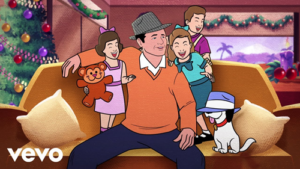 ~ The Christmas Waltz ~
~ The Christmas Waltz ~
“The Christmas Waltz” was written by Sammy Cahn and Jule Styne for Frank Sinatra in 1954. It was originally recorded as the B-side to Sinatra’s version of “White Christmas.” Sinatra also recorded the song for his albums “A Jolly Christmas from Frank Sinatra” (1957) and “The Sinatra Family Wish You a Merry Christmas” (1968).
The song is a holiday standard that has been recorded by many other artists, including: Bing Crosby, Mel Torme, Andy Williams, Peggy Lee, Pat Boone, and She & Him and in 2020 by Amy Grant and Mark Martel. One of the most played versions each year is from 1978 by The Carpenters. Harry Connick Jr.’s version reached number 26 on the Adult Contemporary chart in 2003, making it the most popular version of the song to chart on Billboard.
Cahn recalls, “One day during a very hot spell in Los Angeles the phone rang and it was Jule Styne to say, ‘Frank wants a Christmas song.'” Cahn resisted. “Jule, we’re not going to write any Christmas song after Irving Berlin’s ‘White Christmas.’ The idea’s just ridiculous.” Styne was emphatic, however. “‘Frank wants a Christmas song.'”
The two met in Styne’s apartment to begin work on the project, and Cahn asked the composer, “Hey, Jule, has there ever been a Christmas waltz?” He said no. I said, “Play that waltz of yours.” He did so, and Cahn began work on the lyrics of “The Christmas Waltz”, which dozens of other artists have recorded since.
Referring to the line that goes, “And this song of mine, in three-quarter time,” Cahn writes, “You’ll notice there’s an impure rhyme in that lyric, ‘mine’ and ‘time’.” He notes that another of his collaborators, Jimmy Van Heusen, would not have let him get away with such an imperfection but that Styne was not quite so rigid.
The song’s lyrics evoke the season, with references to frosted windowpanes, candy canes, and Santa’s arrival. The chorus ends with the line “and this song of mine/in three-quarter time/wishes you and yours/the same thing, too.”
See The Official Music Video of Frank Sinatra’s “The Christmas Waltz” from 1954 Click Here
See Harry Connick, Jr.’s “The Christmas Waltz” from 2003 Click Here![]()
The music to “Deck the Halls” is believed to be Welsh in origin and was reputed to have come from a tune called “Nos Galan” dating back to the sixteenth century.
In the eighteenth century Mozart used the tune to “Deck the Halls” for a violin and piano duet. J.P. McCaskey is sometimes credited with the lyrics but he only edited the Franklin Square Song Collection in which the lyrics were first published.
The first publication date of “Deck the Halls” is 1881. The author is unknown but the words are said to originate in America.
See A Disney Video of “Deck The Halls” – Click Here
![]()
Although the names of Noel Regney and Gloria Shayne may not be familiar, the pair had a string of successful songs in late ’50s and early ’60s with Regney writing the music and Shayne the lyrics. They include “Rain, Rain, Go Away,” recorded by Bobby Vinton, and “Dominque” by The Singing Nun. Shayne also had several hits writing with others like “Goodbye Cruel World,” by James Darren, “The Men in My Little Girl’s Life,” by Mike Douglas and “Almost There,” by Andy Williams.
Their masterpiece, however, is “Do You Hear What I Hear?”
Regney (1922-2002) was a Frenchman trained as a classical composer who was drafted into the German army in World War II. He deserted and joined the French Resistance. After the war ended, he joined the French Overseas Radio Service and worked out of French Indochina until moving to Manhattan in 1952. Regney met Gloria Shayne while she was working as a pianist in a hotel dining room and married her a month later.
Regney and Shayne wrote “Do You Hear What I Hear” in 1962 during the Cuban Missile Crisis. Regney drew the image of Jesus as a newborn lamb from Matthew 2:9 and 2:11 and took his lyrics to his wife to set in the reverse of their usual practice. But while it is often taken for a Christmas carol, for Regney and Shayne “Do You Hear What I Hear” is a hymn to peace by a man who had experienced the horrors of war.
“I am amazed that people can think they know the song,” Regney later said, “and not know it was a prayer for peace.”
Although the song has been recorded by Bing Crosby, Perry Como and over 120 others, Regney and Shayne’s favorite recording was Robert Goulet’s 1963 recording for its dramatic delivery and his climatic “Pray for peace,
people everywhere.”
Many people mistakenly assume this Christmas classic has been around for years and that it is of European origin. But it was written in 1962 during the Cuban Missile Crisis as a powerful plea for peace. The song’s message of peace is as desperately needed today as it was then.
See Robert Goulet’s live performance of “Do You Hear What I Hear” – Click Here
![]()
 (Feed The World) Do They Know It’s Christmas Time
(Feed The World) Do They Know It’s Christmas Time
The age of the celebrity supergroup charity single truly began in October 1984, when Boomtown Rats singer Bob Geldof watched in horror as footage of the worsening Ethiopian famine played across his television screen as part of a BBC News documentary. He was still haunted by the images a week later when a chance encounter reunited him with an old friend, Ultravox frontman Midge Ure, who was just as troubled by what he had seen on the report. The men decided to channel their outrage into a new charity single.
The group assembled at Sarm West Studios on November 25th, 1984 was a venerable who’s who of recent U.K. chart toppers. The verses were sung by Paul Young, Boy George, George Michael, Le Bon, and Bono (respectively), while the “Feed the world” chorus featured Geldof, Ure, David Bowie, Phil Collins, Paul McCartney, Status Quo, Bananarama, Paul Weller and many others.
The vocal track was completed in one marathon 24-hour session, and — amazingly — in shops just days later, credited to “Band Aid.” Thanks to a massive publicity campaign and an hourly push on BBC radio, “Do They Know It’s Christmas?” shot to number one in the U.K., where it remained the biggest selling single until Elton John’s “Candle in the Wind 1997.” In addition to the tens of millions of dollars it raised worldwide for Ethiopian famine relief, the song helped sew the seeds for Geldof and Ure’s Live Aid concert the following year.
See Band-Aid’s Original 1984 Official Video of “Do They Know It’s Christmas Time” ” – Click Here
![]()
Puerto Rico singer, Jose Feliciano, was coming off a huge hit with a remake of The Doors’ “Light My Fire” when he recorded this. Belting out, “I wanna wish you a Merry Christmas from the bottom of my heart,” Jose’s has become a Christmas Classic.
The 1970 recording was produced by Rick Jarrard, whose idea it was to add the horns. It is one of the 25 most played and recorded Christmas songs around the world. Feliciano’s original recording is the title track of his 1970 album.
Feliciano was born blind due to congenital glaucoma, September 8, 1945. He was five when his family moved to New York City. This bilingual holiday classic comprises a simple English verse with a Spanish chorus, “Feliz Navidad, prospero ano y felicidad” that translates as “Merry Christmas, a prosperous year and happiness.”
The song’s composer told Billboard magazine: “If I had left in Spanish only, then I knew the English stations might not play it, so I decided to write an English lyric, ‘I want to wish you a merry Christmas.’ And then there was no way the stations could lock that song out of the programming.”
Jose Feliciano’s original version of the song first charted on the Billboard Hot 100 in early 1998, peaking at #70. It returned to the Billboard Hot 100 on the chart dated the week of January 7, 2017 reaching #44.
Watch Jose Feliciano’s live performance of “Feliz Navidad”- Click Here
![]()
Imitation is the sincerest form of capitalizing on someone else’s idea. So it went with the writing duo of Jack Nelson and Steve Rollins in 1949, as Gene Autry’s performance of John Marks’ “Rudolph, the Red-Nosed Reindeer”
sold 2 million copies in its first season.
Three things came to mind:
1) We could write something that stupid.
2) Those guys are making a fortune.
3) We want money, too.
Ipso facto, “Frosty.”
Over the course of the winter, the pair had ascribed anthropomorphic qualities to any number of holiday trappings before they finally came across the concept of the irrepressible snowman.
They tin-pan alleyed a catchy tune from it, and before summer was warm they found themselves at the doorstep of Mr. Autry, promising him they had ‘the next big thing’ for the Christmas to come. Autry was an easy sale; he was hoping for a chance to follow up on last year’s triumph, and snatched it up greedily.
Somehow, it worked. It was another hit – not a Rudolph by a long shot, but it did manage to burrow down into the public consciousness enough that Frosty joined the pantheon of Christmas icons.
Nelson and Rollins sold Autry another song at the same time – just in case.
And that’s how the Easter ballad “Here comes Peter Cottontail” was born.
A few of the more popular versions of “Frosty” that gets regular airplay each holiday season are from 1963 by The Ronnettes and by Jimmy Durante from the 1969 animated Christmas television special.
Watch The Original 1969 Full Movie of “Frosty The Snowman” – Click Here
![]()
This is a traditional English carol dating back to the 16th or 17th century. It was first published in England in 1833, when it appeared in “Christmas Carols Ancient and Modern,” a collection of seasonal carols gathered by William B. Sandys.
Ancient and Modern also marked the first publication of “The First Noel,” “I Saw Three Ships” and other great carols.
The arrangement generally used for this carol today first appeared in the 1871 collection, “Christmas Carols New and Old” by Sir John Stainer and the Reverend H.R. Bramley.
Apart From “God Rest You Merry Gentlemen,” their compilation also included Stainer’s arrangements of what were to become the standard versions of “Good King Wenceslas,” and “What Child Is This?”
When the character Scrooge in Charles Dickens’ “A Christmas Carol” heard this cheerful carol, he grabbed a ruler and made the singer flee in terror.
Bing Crosby recorded the classic on June 8, 1942 with John Scott Trotter and His Orchestra and Max Terr’s Mixed Chorus. It was included on his “Merry Christmas” album of gramophone records released in 1945 on Decca Records. The collection consisted of ten songs on five 78 records, all of which had been previously released. Each one had a holiday theme with the exception of “Danny Boy.” Prior to the long-playing album era, such assemblies were not common for popular music. The album itself has sold over 15 million copies, and is the best-selling Christmas album of all-time.
Perhaps the most interesting aspect of the familiar Christmas carol is the confusion surrounding the punctuation of its title. The song, which originated in England in the sixteenth or seventeenth century, properly “God Rest You Merry, Gentlemen,” “God Rest You, Merry Gentlemen,” “God Rest You Merry Gentlemen,” or some other permutation? Journalist/music critic Harold Schonberg devoted an entire article to the subject in 1971, tracing the work’s history through a myriad of nineteenth-century editions. Citing an 1893 reprint (which itself might have introduced an error) of the earliest known source of the words, a broadsheet in the “Roxburghe Collection of the British Museum,” Schonberg determined that the original was “God Rest You, Merry Gentlemen.”
See MercyMe’s “God Rest Ye Merry Gentlemen” – Click Here
![]()
The man we know as ‘Good King Wenceslas’ was actually Wenceslaus I, Duke of Bohemia and lived from c.907 to 28 September 935.
And the reason we have his exact date of death is that he was assassinated – on the orders of his brother, appropriately named Boleslaus the Cruel.
The words to the carol were written in 1853 by John Mason Neale but the melody is much older – it’s a 13th-century tune called ‘Tempus adest floridum’ in praise of the spring.
Wenceslas was regarded as a martyr and saint almost immediately after his death but he wasn’t promoted from Duke of Bohemia to King of Bohemia until Holy Roman Emperor Otto I gave him the title posthumously a few years after his death.
The carol was written for the Feast of St Stephen, better known as Boxing Day. And it celebrates the long tradition of charitable giving on the Second Day of Christmas.
It’s become one of the best loved carols ever written.
Hear Mannheim Steamroller’s popular version of “Good King Wenceslas” – Click Here
![]()
The creation of “Handel’s Messiah” was actually induced by George Frederick Handel’s librettist, Charles Jennens. Jennens expressed in a letter to his friend that he wanted to create a Scriptural anthology set to music by Handel. Jennens’ desire quickly turned into reality when Handel composed the entire work in only twenty-four days. Jennens wished for a London debut in the days leading to Easter, however, a doubtful Handel anticipated such a wish would not be granted. A year after the work was completed, Handel received an invitation to perform his music in Dublin to which he joyously agreed.
In his book, “Spiritual Lives of the Great Composers,” Patrick Kavanaugh tells how Handel barely ate during the 24 days he wrote “Messiah.” At one point, the composer had tears in his eyes and cried out to his servant, “I did think I did see all Heaven before me, and the great God Himself.” He had just finished writing the “Hallelujah” Chorus.
Amazingly, “Messiah” came at a time in his life when the 56-year-old Handel was facing bankruptcy and complete failure. He also had serious health problems. Also, some Church of England authorities were apparently critical of him and his work. He seemed all washed up – with his future behind him. But writing “Messiah” proved to be the positive turning point in his life.
Handel was born in Germany. His father wanted him to study law, but George Frederick had an aptitude for music, which was clear early on. His mother bought him a harpsichord, which they kept up in the attic, secret from his father. By the time he was twelve, Handel wrote his first work. Later, after his father’s death, he tried to study law, but he had no interest. So he studied music at the University of Halle.
In 1712, Handel moved to England and never returned to Germany. While he experienced various successes through various compositions, including operas and sacred operas (oratorios, based on biblical themes), Kavanaugh notes that his failures threatened to overwhelm Handel:
“His occasional commercial successes soon met with financial disaster…He drove himself relentlessly to recover from one failure after another, and finally his health began to fail. By 1741 he was swimming in debt. It seemed certain he would land in debtor’s prison.”
But 1741 proved to be the turning point. On the one hand, he gave what he feared was his farewell concert. On the other hand, Jennens, gave him the libretto (a text) for a sacred work. It was essentially 73 Bible verses, every word coming from the King James Version of the Bible. 42 of the verses come from the Old Testament, including many passages from the Psalms and Isaiah. Thirty-one come from the New Testament.
A charity in Dublin paid him money to write something for a charity performance. “Messiah” was the result, and it
was very successful. According to one source, proceeds freed 142 men
from debtors’ prison.
Watch this live performance of “Handel’s Messiah” – Click Here
![]()
Most people know that Irving Berlin wrote “White Christmas.” But many are unaware that he also wrote the standard, “Happy Holiday.” Berlin wrote both songs for the 1942 film “Holiday Inn.” In fact, he wrote all 12 songs for the film.
Many people mispronounce the title as Happy Holidays when it should be singular.
It expresses simple good wishes for the holiday season.
“Happy Holiday” was introduced by Bing Crosby and Marjorie Reynolds in the movie in a scene when the Inn opens for the first time. While it is commonly regarded as a Christmas song, in the film it is performed on New Year’s Eve, and expresses a wish for the listener to enjoy “happy holidays” throughout the entire year. The film received a 1943 Academy Award for Best Original Song (Irving Berlin for “White Christmas”), as well as Academy Award nominations for Best Score (Robert Emmett Dolan) and Best Original Story (Irving Berlin).
Jo Stafford was the first to release “Happy Holiday” on a Christmas album, on her album of the same name in 1955.
Bing Crosby recorded the song on June 1, 1942, for Decca Records with John Scott Trotter and His Orchestra, plus The Music Maids and Hal. Crosby also used the song as the introduction to his long-running “A Christmas Sing with Bing” radio shows.
Andy Williams probably gets the more airplay each season. He did it in a medley with “The Holiday Season”), on his 1963 album “The Andy Williams
Christmas Album.”
See Andy Williams’ live performance of “Happy Holiday” – Click Here
![]()
“Hark the Herald Angels Sing” was written by Charles Wesley, brother of John Wesley, founder of the Methodist church, in 1739.
A sombre man, he requested slow and solemn music for his lyrics and thus “Hark the Herald Angels Sing” was sung to a different tune initially.
Over a hundred years later Felix Mendelssohn (1809-1847) composed a cantata in 1840 to commemorate Johann Gutenberg’s invention of the printing press. English musician William H. Cummings adapted Mendelssohn’s music to fit the lyrics of “Hark the Herald Angels Sing” already written by Wesley.
Two hundred and eighty plus years later, its still going strong. Think the latest Lady Gaga hit will last that long?
See Amy Grant’s live performance of “Hark, The Herald Angels Sing?” along with Art Garfunkle – Click Here
![]()
“Have A Holly Jolly Christmas” is a 1962 Christmas song written by Johnny Marks, who also wrote “Rocking Around The Christmas Tree”, “Rudolph The Red Nosed Reindeer,” and Chuck Berry’s “Run, Run, Rudolph.”
It is most famously performed by Burl Ives. The song has since become one of the Top 25 most-performed “holiday” songs written by ASCAP members, for the first five years of the 21st century.
The song was featured in the 1964 Rankin-Bass Christmas special, “Rudolph the Red-Nosed Reindeer,” in which Burl Ives voiced the narrator, Sam the Snowman.
Originally to be sung by Larry D. Mann as Yukon Cornelius, the song, as well as “Silver and Gold,” was given to Burl Ives due to his singing fame
This version was also included on the soundtrack album for the special and later released as a single.
“Have A Holly Jolly Christmas” was re-recorded by Ives for his 1965 holiday album, “Have a Holly Jolly Christmas.”
This version of the song has a somewhat slower arrangement than the “Rudolph the Red-Nosed Reindeer” version and features an acoustic guitar solo introduction; it is this version that has since become the more commonly heard rendition on radio.
The song’s enduring popularity is evidenced by its reaching #30 on the Billboard Adult Contemporary chart in 1998, as well as #21 on the US Country Digital Songs chart and #5 on the Holiday 100 chart in 2011.
See Burl Ives’ original video of “Have A Holly Jolly Christmas” – Click Here
![]()
Hugh Martin and Ralph Blane, Hall of Fame writers had written music for such movie classics like “Gentlemen Prefer Blondes” and “Girl Crazy.” They also wrote classics like “The Trolley Song” (nominated for an Academy Award for Best Song in 1945) and “Pass That Peace Pipe” (nominated for an Academy Award for Best Song in 1948). Blane also collaborated with Harry Warren on “My Blue Heaven.”
Martin and Blane were contracted by MGM to write the music for “Meet Me In St. Louis,” which starred Mary Astor, June Lockhart, Margaret O’Brien, and a twenty-two year old who had made her big screen debut five years earlier as a girl from Kansas with her little dog, Judy Garland.
The plot in the movie called for Judy’s character, Esther, to sing a song to her little sister, Tootie, who was worried that the family’s impending move from New York City to Missouri would cause Santa Claus from being able to find her.
The scene was set on Christmas Eve night with Esther and Tootie looking out from an upstairs window onto a snow covered front lawn.
Martin and Blane felt the movie had taken a sudden tender and sad turn and that the song Judy was about to sing should reflect the pain she was feeling. The song’s first lines were “Have yourself a merry little Christmas, it may be your last; next year will be living in the past.”
They brought the song to Judy, who promptly refused to sing the song the way it was written. She sent the song back and requested that they put a more
uplifting spin on it.
The film’s director, and Judy’s future husband, Vincente Minelli, Liza Minelli’s dad, also felt this way and required the songwriters to recreate the film’s crucial musical moment.
Judy based this request on the fact that, during her time off from making movies, she had spent countless days entertaining troops across the world. She knew from her interaction with the troops that they all just wanted to live through the war and return home. Her instinct was that “Have Yourself A Merry Little Christmas” would provide them with hope that they would return home.
Martin and Blane reworked the song with a more encouraging opening: “Have yourself a merry little Christmas, let your heart be light; from now on our troubles will be out of sight.”
Judy approved of the new lyrics and saw it as the perfect anthem for all those troops who wanted more than anything else to be
home for Christmas. Good choice!
A bit of controversy, though. Martin later claimed in his autobiography that he wrote both music and lyrics to all of the songs in “Meet Me In St. Louis” and that “all of the so-called Martin and Blane songs, (except for “Buckle Down, Winsocki” in “Best Foot Forward”), were written entirely by me (solo) without help from Ralph or anybody else.”
By the way, most people think that the title track of the film was also written for the movie. It was actually written in 1904 for the World’s Fair that was held in St. Louis. Judy Garland later recorded it in 1944 for the movie, which centered around the fair.
See Judy Garland’s’ original performance of “Have Yourself A Merry Little Christmas” From “Meet Me In St. Louis” –
Click Here
![]()
Gene Autry has played a pivotal role in three of the best-known Christmas songs. Two of them, “Rudolph the Red-Nosed Reindeer” and “Frosty the Snowman” were written for him, and his performances of them made them famous. The first, however – “Here comes Santa Claus” – he had a hand in writing, as well.
According to Autry, he was inspired to the lyrics in 1947 while riding ahead of the Santa float on his horse down Sunset and Hollywood Boulevards, in the annual Hollywood Christmas parade. At the time, he was at the top of his profession, and was a bit confused that, as he cantered around on his world-famous horse and waved, the kids could care less. They just looked past him, and down the street, screaming at the top of their lungs about their sighting:
“Here comes Santa Claus! Here Comes Santa Claus!!”
So, he put it to song with friend Oakley Haldeman.
Autry first recorded the song in 1947; released as a single by Columbia Records, it became a No. 5 country and No. 9 pop hit. Gene performed the song in his 1949 movie “The Cowboy and the Indians.” He re-recorded it again for Columbia in 1953 and, once more, for his own Challenge Records label in 1957, which released it on more than one album that year.
The song was also featured prominently in the popular 1989 Christmas movie “National Lampoon’s Christmas Vacation” during the climax towards the end of the film. The version of the song used was Autry’s 1957 Challenge Records recording.
By the way, Chevy Chase is touring with Christmas Vacation, showing the film and doing a Q&A with the audience after. It will be at the Fox Theatre in Atlanta on November 28.
See Gene Autry perform “Here Comes Santa Claus” (from The Cowboy and the Indians 1949) – Click Here
![]()
The words for one of Christmas’s most beautiful carols was written by Henry Wadsworth Longfellow on Dec. 25, 1863, in response to the near fatal wound his son, Charles Appleton Wadsworth, received at the Mine Run campaign in Virginia.
On Dec. 25 of that year, he wrote from his Cambridge home, “I Hear the Bells on Christmas Day,” addressing the horrors of the Civil War. It was a testament to the resilience of the human spirit.
However, when it was put to music several years later, the two stanzas that speak to the war were dropped. It was not until 1872 that the poem is known to have been set to music. The English organist, John Baptiste Calkin, used the poem in a processional accompanied with a melody “Waltham” that he previously used as early as 1848. The Calkin version of the carol was long the standard. Other melodies have been composed more recently, most notably in 1956 by Johnny Marks. Marks has contributed numerous holiday classics including “Have A Holly Jolly Christmas,” “Rudolph, the Red-Nosed Reindeer” Chuck Berry’s “Run, Rudolph, Run,” and “Rocking Around
the Christmas Tree.”
Bing Crosby recorded the song on October 3, 1956, using Marks’s melody and verses 1, 2, 6, 7. It was released as a single and reached No. 55. Marks’s tune has since received more than 60 commercial recordings, with total sales exceeding 5 million copies.
In 2008, contemporary Christian music group, Casting Crowns, scored their eighth No. 1 Christian hit with “I Heard the Bells”, from their album “Peace on Earth.” The song is not an exact replica of the original poem or carol, but an interpolation of verses 1, 6, 7 and 3 (in that order), interposed with a new chorus.
See Casting Crowns’ live performance of “I Heard The Bells On Christmas Day” – Click Here
Hear Frank Sinatra’s recording of “I Heard The Bells On Christmas Day” – Click Here
![]()
Probably one of the most simplistic of all holiday songs, “I’ll Be Home For Christmas” was penned by Walter Kent and James “Kim” Gannon. It contains an introduction, one verse, one chorus, and a mere twelve lines.
Originally from Brooklyn, Gannon called upon his every day experiences of watching families say good bye to their sons going off to war; churches filled to the maximum with parents praying for the safe return of their children; the rush towards the mailman with the hopes of a letter from an enlisted family member.
He also saw the fear in people’s eyes when the telegraph delivery man showed up in the neighborhood; the news reports of the latest outbreak of war in places that had been mentioned in the last letter home; the streets filled with holiday decorations, but the feeling of joy missing from the air.
With all this in mind, Gannon could have easily tried to incorporate all these components into a complicated song. Instead, he wrote a simple, straight forward song about the pain of being away from home for the holidays.
When he finished his poem, Gannon took the song to composer Walter Kent, who put the right melody and feel to the words. Kent realized the song was about two things: a message from the family members left behind telling the soldiers that they missed them terribly and a message from the soldiers telling those family members not to give up hope and that the soldiers would
return home soon.
In October of 1943, Bing Crosby recorded the song as a follow up to his enormous hit of 1942, “White Christmas.” As big as “White Christmas” was, when “I’ll Be Home For Christmas” was released, it initially received more airplay and produced more sales than the singer’s hit of the previous year.
Of course, since then, “White Christmas” has gone on to become the biggest selling song of all time.
Eighty years after its release, “I’ll Be Home For Christmas” remains one of the most requested songs every holiday season by members of our armed forces.
Hear Josh Groban’s “I’ll Be Home For Christmas” – Click Here
![]()
 ~ I Saw Three Ships ~
~ I Saw Three Ships ~
“I Saw Three Ships (Come Sailing In)” is a traditional and popular Christmas carol from England. The earliest printed version is from the 17th century, possibly Derbyshire, and was also published by William Sandys in 1833 in his book, “Christmastide: Its History,
Festivities And Carols.”
However, it is believed that earlier versions may have been around
from the 17th Century.
Other sources believe the hymn originated from an English folk song that was written by wandering minstrels traveling through the country in the Middle Ages.
The lyrics confusingly mention the ships sailing into Bethlehem, but the nearest body of water is the Dead Sea about 20 miles away. The reference to three ships is thought to originate in the three ships that bore the purported relics of the Biblical magi to Cologne Cathedral in the 12th century. Another possible reference is to Wenceslaus II, King of Bohemia, who bore a coat of arms “Azure three galleys argent”.
Another suggestion is that the ships are actually the camels used by the Magi, as camels are frequently referred to as “ships of the desert.”
The most common lyrics sung today are about Mary and Joseph traveling to Bethlehem.
See Blackmore’s Night’s version of “I Saw Three Ships” – Click Here
![]()
“It Came Upon a Midnight Clear” was written by Edmund Hamilton Sears in 1849, reportedly at the request of his friend and fellow minister, W.P. Lunt. It was first presented at his 1849 Sunday School Christmas celebration and was originally published on December 29, 1849 in a church magazine, The Christian Register in Boston, Massachusetts. Sears was also was the editor for the Boston-based Monthly Religious Magazine from 1859 to 1871.
The carol started as a poem written by its author who was a part-time preacher living in Wayland, Massachusetts at the time. Maybe one of the first social gospel hymns written. Sears’ context was the social strife that plagued the country as the Civil War approached.
In 1850, a friend of Sears, Richard Storrs Willis, a composer who trained under Felix Mendelssohn, wrote the melody called “Carol,” which he had written for the organ.
Some claim that this was the first Christmas song to be composed in the United States.
In 2006 Daryl Hall and John Oates reached #1 on the American Adult Contemporary chart with their version of this carol. Josh Grobin has one of the more popular renditions as well.
Hear Sixpence None The Richer’s version of “It Came Upon A Midnight Clear” – Click Here
![]()
“It’s Beginning to Look a Lot Like Christmas” is a classic Christmas song written in 1951 by Meredith Willson, who wrote the Broadway play “The Music Man,” which included his famous songs “76 Trombones” and “‘Till There Was You.” The cast recording won the first Grammy Award for Best Original Cast Album (Broadway or TV) and spent 245 weeks on the Billboard charts.
Willson’s work in films included composing the score for Charlie Chaplin’s “The Great Dictator” (1940) (Academy Award nomination for Best Original Score), and arranging music for the score of William Wyler’s “The Little Foxes” (1941) (Academy Award nomination for Best Music Score of a Dramatic Picture).
The Christmas song was originally titled “It’s Beginning to Look Like Christmas”, and celebrates that time when Christmas decorations appear in stores and public displays, which has been earlier and earlier in recent years. There are some dated references in the song, such as the “five and ten,” which is a store selling inexpensive items. The “Hopalong boots” the child wishes for are a reference to those worn by the fictional cowboy Hopalong Cassidy, a popular TV show in the 1950s.
A widespread belief in Yarmouth, Nova Scotia, holds that Willson wrote the song while staying in Yarmouth’s Grand Hotel. The song makes reference to a “tree in the Grand Hotel, one in the park as well…”; the park being Frost Park, directly across the road from the Grand Hotel, which still operates in a newer building on the same site as the old hotel. It also makes mention of the five and ten which was a store operating in Yarmouth at the time.
It is also possible that the “Grand Hotel” Willson mentions in the song was inspired by the Historic Park Inn Hotel in his hometown of Mason City, Iowa. The Park Inn Hotel is the last remaining hotel in the world designed by architect Frank Lloyd Wright, and is situated in downtown Mason City overlooking central park.
The classic has been recorded by numerous artists, but was a hit by Perry Como and The Fontane Sisters with Mitchell Ayres & His Orchestra on September 10, 1951 and released on RCA Victor as a (45 rpm) single (78 rpm). Bing Crosby recorded a version a month later on October 1, 1951, which was also widely played.
Johnny Mathis recorded this in 1971 for his second Christmas album. His version was used in the movie “Home Alone 2: Lost in New York,” and gradually received more airplay than Como’s.
Andy Williams and Dean Martin also recorded popular versions of the song. Michael Buble covered the song and released it on his holiday album, “Christmas.” His version debuted on the Billboard Hot 100 chart dated December 17, 2011. It became the second single achieving success the following Christmas season.
See a performance of “It’s Beginning To Look A Lot Like Christmas” from “The Perry Como Show” – Click Here
![]()
“It’s the Most Wonderful Time of the Year” is a popular Christmas song written in 1963 by Edward Pola and George Wyle. Wylie’s other claim to fame is co-writing the theme song for “Gilligan’s Island” with producer Sherwood Schwartz.
His Christmas song was recorded and released that year by pop singer Andy Williams for his first Christmas album, “The Andy Williams Christmas Album.” However, the song was not released as a promotional single by Columbia Records that year, as they instead opted to promote his cover of “White Christmas” as the official promo single from the album.
The song is a celebration and description of activities associated with the Christmas season, focusing primarily on get-togethers between friends and families. Among the activities included in the song is the telling of “scary ghost stories,” a Victorian Christmas tradition that has mostly fallen into disuse, but survives in the seasonal popularity of numerous adaptations of Charles Dickens’ “A Christmas Carol.”
Other activities mentioned include hosting parties, spontaneous visits from friends, universal social gaiety, spending time with loved ones, sledding for children, roasting marshmallows, sharing stories about previous Christmases, and singing Christmas carols in winter weather.
In a 2005 interview, Andy discusses how The Andy Williams Show figured into his recording of “It’s the Most Wonderful Time of the Year”: “George Wyle, who is a vocal director, who wrote all of the choir stuff and all of the duets and trios and things that I did with all the guests, he wrote a song just for the show – I think the second Christmas show we did – called “Most Wonderful
Time of the Year”.
So I did that, you know, every Christmas, and then other people started doing it. And it’s become over (60) years a big standard. I think it’s one of the top 10 Christmas songs of all time now.”
In the issue of Billboard magazine dated November 28, 2009, the list of the “Top 10 Holiday Songs (Since 2001)” places the Williams recording of “It’s the Most Wonderful Time of the Year” at No. 5. (ASCAP) ranked it at No. 4 in 2010.
The song was selected as the theme song for Christmas Seals in 1968, 1976, 2009 and 2012.
Other versions that get a lot of annual airplay are by Johnny Mathis, from his 1986 album “Christmas Eve with Johnny Mathis” and Amy Grant from the 2007 album “Home For Christmas.”
See A Collage of Songs From Andy Williams 12 Years of Christmas Specials
Including A Performance of “It’s The Most Wonderful Time Of The Year” – Click Here
See Amy Grant’s live performance of her popular version of “It’s The Most Wonderful Time Of The Year” – Click Here
![]()
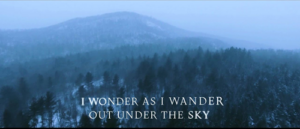 ~ I Wonder As I Wander ~
~ I Wonder As I Wander ~
While in the town of Murphy in Appalachian North Carolina, American folklorist and singer, John Jacob Niles, attended a fundraising meeting held by evangelicals who had been ordered out of town by the police. In his unpublished autobiography, he wrote of hearing the song:
“A girl had stepped out to the edge of the little platform attached to the automobile. She began to sing. Her clothes were unbelievably dirty and ragged, and she, too, was unwashed. Her ash-blond hair hung down in long skeins. … But, best of all, she was beautiful, and in her untutored way, she could sing. She smiled as she sang, smiled rather sadly, and sang only a single line of a song.
“The girl, named Annie Morgan, repeated the fragment seven times in exchange for a quarter per performance, and Niles left with “three lines of verse, a garbled fragment of melodic material—and a magnificent idea”.
Based on this fragment, Niles composed the version of “I Wonder as I Wander” that is known today, extending the melody to four lines and the lyrics to three stanzas. His composition was completed on October 4, 1933. Niles first performed the song on December 19, 1933, at the John C. Campbell Folk School in Brasstown, North Carolina. It was originally published in “Songs of the Hill Folk” in 1934.
Hear Sandi Patty’s performance of “I Wonder As I Wonder” – Click Here
![]()
“Jingle Bells” has an interesting and somewhat surprising origin. It was composed by James Lord Pierpont in 1857 and originally titled “The One Horse Open Sleigh.” Despite its modern association with Christmas, the song was not initially intended as a holiday tune.
Pierpont, born in Boston, MA, in 1822, wrote the song while living in Medford, MA. It is believed to have been inspired by the popular sleigh races held in the town during the winter months. The song was reportedly first performed at a Thanksgiving church service and was intended as a playful piece about winter sleigh rides rather than a Christmas carol.
The original lyrics described a young couple’s sleigh ride that ends humorously with their sleigh tipping over in the snow. Pierpont moved to Savannah in 1857 to work as the organist and music director at the Unitarian Church, where his brother, Rev. John Pierpont Jr., was the minister. That same year, he copyrighted the song under its original title, “The One Horse Open Sleigh.” He also married Eliza Jane Purse, the daughter of Savannah’s mayor, further cementing his ties to the city.
Savannah proudly claims its connection to Jingle Bells, with a historical marker in Troup Square commemorating its association with the song.
It did not gain much attention initially. Two years later, it was republished as “Jingle Bells,” which referred to the sound of sleigh bells used to prevent collisions in snowy conditions.
Although the song had no direct connection to Christmas at its inception, its cheerful melody and winter imagery led to its association with the holiday season over time. By the 1860s and 1870s, it began appearing in parlor song collections and anthologies of winter music. Its popularity grew further with early phonograph recordings and radio broadcasts in the 20th century.
“Jingle Bells” became an enduring classic and was covered by numerous artists over the years. In 1965, it achieved a unique milestone as the first song broadcast from space when astronauts aboard Gemini 6 played it as part of a holiday prank on NASA Mission Control.
Today, “Jingle Bells” is one of the most recognizable Christmas songs worldwide. Its journey from a Thanksgiving novelty to a global holiday anthem reflects its timeless appeal and adaptability across generations. In fact, you’ll find dozens of Christmas recordings closing out with the last eleven notes of “Jingle Bells.”
See A Mickey Mouse Animation Video of “Jingle Bells” – Click Here
![]()
“Jingle Bell Rock” is an American popular Christmas song first released by Bobby Helms in 1957 (after it was recorded in October 1957). It has received frequent airplay in the United States during every Christmas season since then.
“Jingle Bell Rock” was composed by Joseph Carleton Beal and James Ross Boothe. Beal was a Massachusetts-born public relations professional and longtime resident of Atlantic City, NJ, and Boothe was an American writer in the advertising business.
“Jingle Bell Rock” has been performed by many, but Helms’ version is the best known. The song’s title and some of its lyrics are an extension of the old Christmas standard, “Jingle Bells”. It makes brief references to other popular songs of the 1950s, such as “Rock Around the Clock”, and mentions going to a “Jingle hop”. An electric guitar played by Hank Garland can be heard playing the first notes of the chorus of “Jingle Bells”. Backup singers were the Anita Kerr Singers.
Helms’ original version charted at No. 13 on Billboard’s Most Played C&W chart. It also crossed to the pop charts, peaking at No. 6 on the Billboard Best Sellers chart, and at No. 11 on Cashbox magazine’s January 11, 1958 chart.
A bit of controversy. Helms, as well as session guitarist on the song Hank Garland, both claimed until their deaths, that it was they, not Beal and Boothe, who wrote the song. They claimed that the original song by Beal and Boothe was called “Jingle Bell Hop,” and that it was given to Helms by a Decca executive to record. This song, according to Helms and Garland, had little to no resemblance to the current song. Helms did not like it, and as a result, they both proceeded to work on it, changing the music, lyrics, and tempo, and also giving it a previously-missing bridge. This new song, they claimed, was the one that is known today. However, neither of them received writing credit or subsequent writing royalties.
“‘I really didn’t want to cut it because it was such a bad song. So me and one of the musicians [, Hank Garland], worked on it for about an hour putting a melody to it and we put a bridge to it,’ said Helms [in a 1992 interview].”
“‘I let it hop back to where it came from,’ Garland recalled. ‘It wasn’t any good. [Bobby and I] came up with the “Jingle Bell Rock” America hears every holiday season,’ he [Garland] said [in a 2001 interview].”
Billy Garland, brother of Hank Garland, maintains his deceased brother’s story, and has long been involved with and vocal about the issue.
It has sold 891,000 copies in the United States, placing it ninth on the list of all-time best-selling Christmas/holiday digital singles in SoundScan history.
See the Official Video of Bobby Helms’ “Jingle Bell Rock” – Click Here
![]()
Jeremiah was not a bullfrog in this much older version of that title. The words and lyrics of the old carol “Joy to the World” were written in 1719 by Isaac Watts (1674-1748) based on Psalm 98, 96:11-12 and Genesis 3:17-18. The father of John Watts was a non-conformist and so extreme were his views that he was imprisoned twice.
Watts was ordained as a pastor of an independent congregation. He wrote many hymns and carols and was awarded a Doctor of Divinity degree by the University of Edinburgh in 1728.
The tune usually used today is from an 1848 edition by Lowell Mason for The National Psalmist. Mason’s was the fourth version to have been published. Musically, the first four notes of “Joy to the World” are the same as the first four in the chorus “Lift up your heads” from “Handel’s Messiah” (premiered 1742), and, in the third line, the same as found in another Messiah piece: the arioso, “Comfort ye”. Consequently, and with Mason’s attribution to George Frederic Handel, there has long been speculation over how much a part “Handel’s Messiah” had in “Joy to the World.”
As of the late 20th century, “Joy to the World” was the most-published Christmas hymn in North America.
Watch a live performance of Mannheim Steamroller’s popular version of “Joy To The World” – Click Here
![]()
The wonderful Christmas song “Let It Snow! Let It Snow! Let It Snow!” was created by lyricist Sammy Cahn and the composer Jule Styne in 1945. The duo wrote a slew of hits including “Three Coins in a Fountain,” “It’s Magic,” “Time After Time,” “I Believe,” “Call Me Irresponsible,” and “My Kind of Town.”
The words and lyrics of “Let It Snow” reflect the feeling of warmth and security associated with Christmas and brings in the more modern customs of popping corn!
Some may not be familiar with some additional lyrics that were not included in many of the more popular versions. ..
He’s sitting by the fire’s cosy glow
He don’t care about the cold and the winds that blow
He just says, “Let it snow, let it snow, let it snow”
Why should he worry when he’s nice and warm?
His gal by his side and the lights burn low
He just says, “Let it snow, let it snow”
Despite the lyrics making no mention of any holiday, the song has come to be regarded as a Christmas song in North America due to its winter theme, being played on radio stations during the Christmas and holiday season and having often been covered by various artists on Christmas-themed albums. But the first hit was by Vaughn Monroe, who reached No. 1 on the Billboard Best Sellers music chart after the holidays in late January and through February 1946.
The song was reprised in recent years when used in the Bruce Willis film Die Hard, which started with the film’s hero travelling to meet his family at Christmas. Andy Williams has the most recognizable version of the song, recorded in the mid-1960’s.
Watch Andy Williams performing “Let It Snow” – Click Here
![]()
The words and music to the Christmas song “Little Drummer Boy” were composed by Katherine K. Davis, Henry Onorati and Harry Simeone in 1958. The lyrics consist of no less than 21 ‘rum pum pum pum’ – a major part of the song and therefore presenting an apparently easy task for the lyricist!
First recorded in 1951 by the Trapp Family Singers, the song was further popularized by a 1958 recording by the Harry Simeone Chorale. However, “Little Drummer Boy” has been a huge hit for several artists. The most notable rendition was created by the most unlikely combination on Bing Crosby’s last TV appearance was a Christmas special filmed in London in September 1977 and aired just weeks after his death. It was on this special that Crosby recorded the duet of “The Little Drummer Boy” and “Peace on Earth” with rock star David Bowie, looking very boy next doorish at the time. It was a massive hit for the artists and was, in fact, Bing’s most successful recording since the legendary “White Christmas” thirty years earlier.
Crosby died shortly after within weeks of the deaths of legends Groucho Marx and Elvis Presley.
Popular Christian artists, For King & Country, who had a successful Christmas album based on the song, have a national tour called A Drummer Boy Christmas Tour.
See Bing Crosby’s famous duet with David Bowie doing the medley “Peace On Earth/Little Drummer Boy” – Click Here
![]()
“Mary, Did You Know?” is a Christmas song addressing Mary, mother of Jesus, with lyrics written by gospel singer Mark Lowry and music written by Buddy Greene. It was originally recorded by Christian recording artist Michael English on his self-titled debut solo album in 1991 (English and Lowry were both members of the Gaither Vocal Band at the time).
It reached No. 6 on CCM Magazine’s AC Chart. Lowry would record the song several times himself, most notably with the Gaither Vocal Band on their 1998 Christmas album, “Still the Greatest Story Ever Told.”
The song has since gone on to become a modern Christmas classic, being recorded by many artists over the years across multiple genres.
It was also used as the basis for a stage musical, also titled “Mary, Did You Know” and written by Bruce Greer, that won the 1999 Dove Award for Musical of the Year.
Among the most popular versions are by Kenny Rogers and by Pentatonix.
See Pentatonix’ Official Video for “Mary Did You Know” – Click Here
See Mark Lowry perform his own composition, “Mary, Did You Know” – Click Here
![]()
Karen Carpenter’s voice has almost become synonymous with Christmas season. Well, this was The Carpenters’ first attempt at Christmas music. The lyric was originally written in 1946 by Frank Pooler when he was 18. Frank was the choir director at California State University, Long Beach. Karen and her brother, Richard Carpenter, were both part of the choir. In 1966, at Pooler’s request, Richard composed the music for this ballad, which was first released in 1970. This sparked the interest and idea of a Christmas album by the Carpenters, and on October 13, 1978, “Christmas Portrait” was released. It was first available on a 7-inch single in 1970 and was later re-issued in 1974 and again in 1977. The single went to number one on Billboard’s Christmas singles chart in 1970, and did so again in 1971 and 1973.
In 1978, the Carpenters issued their “Christmas Portrait” album, which contained a new version of “Merry Christmas Darling.” Richard Carpenter himself calls the original recording one of his sister’s very best. Karen once said: “‘Merry Christmas Darling,’ I think, is a little extra special to both of us, because Richard wrote it, and the lyrics were written by the choral director at Long Beach State choir, where we went to school, Frank Pooler.
“Frank was very helpful in our college days, when we were trying to get a contract and constantly missing classes and everything. “He was the only one down there who actually understood what we were after, and he stood behind us all the way.
“We just did a benefit at Long Beach state, for a scholarship fund, and we did it with the choir and the whole thing, and we did ‘Christmas Darling’ and he just glows every time we do it. I think it’s my favorite, because it’s really close to me.”
Pooler died January 19, 2013 from lung cancer at his home in Los Alamitos, California.
See The Carpenters’ perform “Merry Christmas Darling” – Click Here
![]()
Many believe that Amy Grant wrote “My Grown-Up Christmas List.” Well, Amy first brought the song to mass popularity when it was included on her second Christmas album, “Home For Christmas” in 1992. She did add an additional verse to the song, which was released as the second single from the popular album.
But, the original music for “My Grown-Up Christmas List” was actually written by popular songwriter David Foster who has penned tons of pop hits including “After the Love Has Gone” by Earth, Wind & Fire, Chicago’s “Hard to Say I’m Sorry” and”You’re the Inspiration” “Glory of Love” by Chicago’s Peter Cetera. “Love Theme from St. Elmo’s Fire”, “I Have Nothing” by Whitney Houston, Toni Braxton’s “Un-Break My Heart,” Celine Dion’s “Because You Loved Me” and countless others.
The with words to “My Grown-Up Christmas List” were added by Foster’s then wife, Linda Thompson-Jenner.
The first recording was by Natalie Cole for Foster’s non-holiday album “River of Love” Another version was on his 1993 holiday release, “The Christmas Album.”
Kelly Clarkson had a hit in 2003 from the American Idol Christmas special.
The Hallmark Channel has a 2022 Christmas movie by the same name with the song played in the end.
See Amy Grant’s official music video of “My Grown-Up Christmas List” from 1993 – Click Here
![]()
The popular Christmas Carol, “The First Noel,” is believed to date from the 13th or 14th century, a time in which all medieval civilization in Europe was springing to life. The inspiration for the story of the song comes from dramatizations of favorite Bible stories for holidays, which were called the Miracle Plays, and were very popular during this time. It tells the story of the night that Jesus was born in Bethlehem, based on the Gospel accounts in Luke 2 and Matthew 2.
Noel is the French word for Christmas and is from the Latin natalis, meaning “birthday.” Most medieval poetry was written to be sung, so it is presumed that the words were written with an existing tune in mind. This makes the tune to the song even older, and is likely English or French.
‘The First Nowell’ was first published in Davies Gilbert’s “Some Ancient Christmas Carols” in 1823. Ten years later, William Sandys was concerned that the celebration of Christmas was ‘on the wane.’ His action that changed this was to compile a collection of carols in order to preserve them. Sandys’ collection of Christmas Carols begins with a history of the Christmas celebration, followed by a total of 80 carols. It is here that “The First Noel” was first published with words by Sandys in his 1833 edition of “Christmas Carols, Ancient and Modern.”
All subsequent versions of “The First Noel” have been based on the version found in Sandys’ collection. The publication of Sandy’s 1823 book has historical significance in that it was the first of its kind to include many of the songs we now consider classic Carols. Songs such as “God Rest Ye Merry Gentlemen,” “The First Nowell,” “I Saw Three Ships Come Sailing In,” and “Hark the Herald Angels Sing” had their public debut in this songbook.
See Johnny Mathis’ original recording of The First Noel from 1958’s “Merry Christmas” – Click Here
![]()
The origin of “The Nutcracker,” a classic Christmas Story, is a fairy tale ballet in two acts centered on a family’s Christmas Eve celebration. Alexandre Dumas Pere’s adaptation of the story by E.T.A. Hoffmann was set to music by Tchaikovsky and originally choreographed by Marius Petipa.
It was commissioned by the Moscow Imperial Theatres in 1891 and premiered a week before Christmas 1892. Since premiering in western countries in the 1940s, this ballet has become the most popular to be performed around Christmas time.
The story centers on a young girl’s Christmas Eve and her awakening to the wider world and romantic love. The composer made a selection of eight of the more popular pieces before the ballet’s premiere, forming what is currently known as “The Nutcracker Suite.” The suite became instantly popular; however the complete ballet did not achieve its great popularity as a Christmas performance event until almost 100 years later.
Watch Lindsey Stirling’s official video for “Dance of the Sugar Plum Fairy” from The Nutcracker – Click Here
![]()
“O Christmas Tree” is a traditional German Carol. The author of the lyrics are unknown as is the composer of the tune. The tradition of bringing a tree inside and decorating it with candy, baubles and bells was started in the nineteenth century and is immortalized in the carol “O Christmas Tree” lyrics.
The carol, which is also known by it’s German title, “O Tannenbaum,” has been performed and recorded by hundreds of artists over the centuries.
One of the more popular versions was a jazzy instrumental from “A Charlie Brown Christmas.”
See A Charlie Brown Christmas – “O Tannenbaum” – Click Here
See Tony Bennett’s version of “O Christmas Tree” – Click Here
![]()
John Francis Wade is now generally recognized as both author and composer of the hymn “Adeste fideles,” originally written in Latin in four stanzas. The earliest manuscript signed by Wade is dated about 1743. By the early nineteenth century, however, four additional stanzas had been added by other writers.
Besides Wade, the tune has been attributed to several musicians, from John Reading and his son, to Handel.
Research by Dom John Stéphan, author of “The Adeste Fidelis: A Study of Its Origin and Development” (1947), has determined that the first and original manuscript was dated in 1743, indicating that Wade composed both the Latin words and the music between 1740 and 1743.
The English language translation of stanzas one, two, three and six is the work of Frederick Oakeley (1802-1880), a translator of Latin hymns. Oakeley’s stanzas, penned in 1841, first appeared in F.H. Murray’s “Hymnal for Use in the English Church” (1852) under the title “Let us go even unto Bethlehem, and see this thing which is come to pass.” (Luke 2:15)
Watch Celtic Woman’s live performance of “O Come All Ye Faithful” from 2010 – Click Here
![]()
The words and lyrics of the old carol “O Holy Night” were written by Placide Cappeau de Roquemaure in 1847. Cappeau was a wine seller by trade but was asked by the parish priest to write a poem for Christmas. He obliged and wrote the beautiful words of the hymn. He realized that it should have music to accompany the words and approached his friend Adolphe Charles Adams (1803-1856).
The music for the poem was composed by Adams. Adolphe had attended the Paris conservatoire and forged a brilliant career as a composer. It was translated into English by John Sullivan Dwight (1812-1893).
The song has been recorded by numerous well-known popular-music, classical-music, and religious-music singers. Celine Dion reached #44 on Billboard’s Holiday chart in 1998. Josh Groban hit #1 in 2002 on their Adult Contemporary cart. The cast of Glee also topped the charts in 2010-11. Lauren Daigle reached #14 in 1017-2018 on the Contemporary Christian charts.
Some of the best known versions have been by Mariah Carey, Luciano Pavarotti and Placido Domingo, Nat King Cole, Ella Fitzgerald, Perry Como, Johnny Mathis, Whitney Houston, Andy Williams, Bing Crosby and Mahalia Jackson.
See Celine Dion’s live performance of “O Holy Night” – Click Here
See Trans Siberian Orchestra’s live performance of “O Holy Night” – Click Here
![]()
Rector Phillips Brooks (1835-1903) of Philadelphia, wrote the words to “O Little Town of Bethlehem” in 1868, following a pilgrimage to the Holy Land. He was inspired by the view of Bethlehem from the hills of Palestine especially at night time, hence the lyrics of “O Little Town of Bethlehem.”
His church organist, Lewis Redner, (1831-1908) wrote the melody for the Sunday school children’s choir.
English singer Cliff Richard had a 1982 Christmas hit with it in the UK. In the US, the better known version is by American CCM artist Amy Grant, released on her 1983 Christmas album
See Nat King Cole’s Lyric Video of “Oh Little Town Of Bethlehem” – Click Here
![]()
“Please Come Home for Christmas” is a Christmas song, released in 1960, by the American blues singer and pianist Charles Brown. The title is often thought to be “Bells Will Be Ringing”, which are the first four words of the song.
Hitting Billboard’s Hot 100 chart in December 1961, the tune Brown co-wrote with Gene Redd peaked at position #76. It appeared on the Christmas Singles chart for nine seasons, hitting #1 in 1972.
It includes a number of characteristics of Christmas music, such as multiple references in the lyrics to the Christmas season and Christmas traditions, and the use of a Church bell type sound, created using a piano at the start of the song.
Then The Eagles got a hold of it.
Sessions for their follow-up to “Hotel California” were dragging on, and executives at Asylum Records had grown concerned. Everybody needed a break.
“The record label was bugging us because “The Long Run” was, at this point, 6.8 months behind schedule,” producer Bill Szymczyk told Miami’s WPLG in 2015.
Then Don Henley had an out-of-nowhere idea: “Well, maybe if we give them a Christmas single, they’ll get off our back,” Szymczyk remembered.
It proved to be just the rejuvenating time-out everybody needed. Problem: Eagles were holed up in Szymczyk’s Bayshore Recording Studios – a converted motel at Coconut Grove, Fla., which was certainly no winter wonderland.
Henley suggested the recently reformulated Eagles cover an old Charles Brown song he remembered as a kid growing up in east Texas. Unlike the rest of what would become the Eagles’ final classic-era album, “Please Come Home for Christmas” was quickly completed. A song devoted to holiday melancholy seemed to have finally ended their creative stalemate.
“We needed a break from the daily routine,” Henley told Cincinnati’s The Enquirer in 2017. “So, I suggested that we record a Christmas song, and I went on to suggest this song that I had remembered from my teenage years. The band members, and our producer, welcomed the idea.”
The completed 1978 single served as an official introduction to new bassist Timothy B. Schmit, who’d replaced Randy Meisner after the Eagles’ most recent tour completed.
“We knocked it out in a matter of two, three days,” Szymczyk told WPLG, “gave it to the label and then they indeed did get off our back until we were finished.”
Their version peaked at #18 on the U.S. Billboard Hot 100, the first Christmas song to reach the Top 20 on that chart since Roy Orbison’s“Pretty Paper” in 1963.
Originally released as a vinyl 7″ single, it was re-released as a CD single in 1995, reaching #15 on the Billboard Adult Contemporary chart. This version includes the lyrics “bells will be ringing the sad, sad news” (that is, a Christmas alone) as opposed to Brown’s original version which references the “glad, glad news” (that is, Christmas in general).
Hear Charles Brown’s original version of “Please Come Home for Christmas” – Click Here –
Hear The Eagles live performance of “Please Come Home for Christmas” – Click Here – ![]()
Forget Black Friday melees and ugly sweater parties: the holiday season doesn’t start until Brenda Lee’s “Rockin’ Around the Christmas Tree” makes its annual return to radio.
Six decades after “Little Miss Dynamite” recorded the now-classic song, it continues to be a holiday favorite. To date, more than a million downloads of the song have been sold.
“Rockin’” was written by Johnny Marks, a Jewish songwriter found his niche with the holidays. He also penned “Rudolph the Red-Nosed Reindeer,” (for Gene Autry,) “A Holly Jolly Christmas,” and “Silver and Gold” (for Burl Ives), “I Heard the Bells on Christmas Day” (introduced by Bing Crosby), and “Run Rudolph Run” (recorded by Chuck Berry).
According to Lee, who struck up a lifelong friendship with Marks, after he wrote the song he told a publisher friend, “I want Brenda Lee to do this song.”
Looking back, Lee isn’t quite sure what led Marks to seek her out: “I was only 12, and I had not had a lot of success in records, but for some reason he heard me and wanted me to do it. And I did.”
Though they weren’t recording “Rockin’” during the holidays, Lee’s producer, Owen Bradley, was determined to get his young artist in the Christmas spirit. “When I walked into the studio, Owen had the lights way down low, the air conditioning was, I think, set on zero, and he had a Christmas tree and Christmas lights. I thought that was so special,” she remembered.
Lee recorded the song with members of Nashville’s A-Team, the legendary collective of session musicians that included Hank Garland and Grady Martin on guitar, Boots Randolph playing swinging saxophone, and the Anita Kerr Singers contributing backing vocals. “It was magic, and I think we all knew it,” Lee said. “It took a few years to take off, but once it did, it really did.”
When the song was released as a single in 1958, it was largely unsuccessful. It wasn’t until after Lee’s 1960 mega-hit, “I’m Sorry,” that “Rockin’,” which had been re-released, started to catch on, cracking the Top 20 on the pop charts that year and continuing to perform well during subsequent holiday seasons.
In 1990, the hit movie “Home Alone” featured “Rockin’” in its entirety, exposing the song to a new generation of listeners, many of whom weren’t even born when Brenda charted her last non-holiday Top 10 a decade earlier.
“(The movie) breathed new life into it, I think,” the Georgia native says. “It has just been a blessing.”
She performs “Rockin’ Around the Christmas Tree” at all of her concerts, no matter the season, and says she’s probably sung it “thousands and thousands” of times. The audience loves it even when it’s the middle of August, and for Lee, it never gets old. “That’s the magic of a good song,” she explains. “You don’t get tired of singing it.”
Lee, a member of the Country, Rock and Roll, and Rockabilly Halls of Fame, considers “Rockin’” her signature song. “It’s extended my career,” the diminutive legend says. “You get to a certain age in this industry and you’re not as hot as you once were. It’s meant to be that way…that’s why there are numbers under one. We can’t always be No. 1. I think when you have that mindset, you’re just thankful that you’re a part of something you love to do.”
In November 2023, Lee released a music video for the song, and in December, the song topped the US Billboard Hot 100 chart, marking Lee’s third number-one single and making Lee the oldest artist ever to top the Hot 100 at age 78, later breaking the record once again one week later at the age of 79. The song also set the record for the longest period of time between an original release and its topping the Hot 100 (65 years), as well as the longest time between number-one singles by an artist: 63 years, one month and two weeks.
(Portions of story from The Tennessean)
See Brenda Lee’s live performance of “Rockin’ Around The Christmas Tree” – Click Here ![]()
Bob May’s family was decimated by the financial struggles that the Great Depression inflicted on millions of Americans. Though he had a college degree, Bob took a job at Montgomery Ward’s as an advertising copywriter to support his family. Though times were difficult, the Mays were able to stay afloat. But illness struck Bob’s wife, Evelyn, when she was diagnosed with cancer in 1936. The family’s savings had to be used to help battle the disease. After two years of fighting, Evelyn was getting worse and it became apparent she would not survive.
Bob and Evelyn’s four year old daughter wanted to know what was wrong with her mother and why she wasn’t like other mothers. Bob wanted Barbara to understand that there was always hope and that being different wasn’t necessarily a bad thing. Drawing upon his creativity derived from his job, Bob told his daughter a bedtime story about a reindeer with a large, red nose. He detailed the pain the reindeer felt by being different, but also the joy he felt when he realized his differences could be used to help others.
Barbara loved the story and asked that Bob tell it to her every night before bed. As the days and weeks went by, the story became more and more elaborate. Bob even gave the reindeer a name: Rudolph. Unable to purchase a gift for Barbara, Bob decided to put his story onto paper in a homemade book. Using his skills as a copywriter and artist, Bob drew all the pictures for the book as well. Shortly before Christmas arrived, Evelyn lost her battle with cancer. But Bob insisted on finishing the book and had a completed copy of “Rudolph the Red-Nosed Reindeer” under the tree on Christmas morning for Barbara.
At the Montgomery Ward holiday party, co-workers who knew of Bob’s children’s story asked him to read it to them. Reluctantly, Bob read the story. The co-workers were so impressed by the story that they asked for copies of their own. And the chairman of the board of Ward’s recognized the reaction to the story and saw a marketing opportunity. The chairman, Stewell Avery, purchased all the rights to the story from Bob and had thousands of copies printed and shipped to stores across the country in time for Christmas 1939. For the next six years, any child who visited Santa in a Ward’s store would get a free copy of “Rudolph.”
By 1946, Ward’s had given away more than six million copies of Rudolph. With requests for a new version to be printed, in one of the most generous moves ever made by the chairman of a major corporation, Stewell gave all rights back to Bob May. A year later, the release of the newly published and printed version made Bob a wealthy man. About that time, Bob’s brother-in-law, Johnny Marks (there’s that name again) suggested the story be turned into a song. Marks, who also wrote “Have A Holly, Jolly Christmas” and “Rockin’ Around The Christmas Tree,” among other classics, created the lyrics and the music for “Rudolph,” and then offered it to a variety of artists, including Bing Crosby and Dinah Shore,
who both passed on the song.
As a last effort, Marks offered the song to country star Gene Autry, who Marks thought might be looking for a follow up to the hit “Here Comes Santa Claus.” Gene initially also passed on the song, but Marks asked him to give it another chance. Gene took the song home and played it for his wife Ina. When Ina heard the line “…they wouldn’t let poor Rudolph play in any reindeer games,” she insisted that Gene record the song.
A few weeks later, Gene performed the song for the first time at a Madison Square Garden rodeo. The song was such a hit, the record label rushed it into the stores for the 1949 holiday season. “Rudolph” soon became the second best-selling Christmas song of all time, behind only “White Christmas.”
The song and the story of the unique reindeer were turned into a television special – which in its own right became a holiday classic – in 1964. As with “A Charlie Brown Christmas” and “How the Grinch Stole Christmas,” Rudolph no longer airs just once annually but several times during the Christmas and holiday season. It has been telecast every year since 1964, making it the longest continuously running Christmas TV special.
A gift that was designed to comfort a child who had recently lost her mother to illness ended up giving the world one of the most beloved characters of all time.
Hear Gene Autry’s original version of “Rudolph The Red-Nosed Reindeer” from 1949 – Click Here
Watch the full movie of “Rudolph The Red-Nosed Reindeer” with Burl Ives – Click Here![]()
“Santa Claus is Coming to Town,” was written in 1932 by Haven Gillespie and J. Fred Coots. After countless versions by stars as varied Elvis Presley, The Jackson 5, Burl Ives, Bruce Springsteen and Perry Como, it’s hard to believe that Gillespie and Coots’ song was turned down all over town because it was “a kid’s song.”
Even though Coots was a writer on the Eddie Cantor radio show, Cantor at first passed on the song. But just like “Rudolph,” it was at the urging of the singer’s wife that he agreed to do it. Again, good advice.
Bing Crosby and The Andrews Sisters reached the Billboard charts briefly in 1947 with it. Pat Boone had one of the most recognizable versions of the song in 1959 that still gets lots of airplay. The Four Seasons version charted at #23 in 1963.
Hear Pat Boone’s hit of “Santa Claus Is Coming To Town” – Click Here
![]()
The origin of the Christmas carol we know as “Silent Night” was a poem that was written in 1816 by an Austrian priest called Joseph Mohr not long after the Napoleonic wars had taken their toll.
On Christmas Eve in 1818 in the small alpine village called Oberndorf, it is reputed that the organ at St. Nicholas Church had broken. Mohr gave the poem of “Silent Night (Stille Nacht)” to his friend Franz Xavier Gruber and the melody was composed with this in mind.
The music to “Silent Night” was therefore intended for a guitar and the simple score was finished in time for Midnight Mass.
An organ builder and repair man working at the church took a copy of the six-verse song to his home village. There, it was picked up and spread by two families of traveling folk singers, who performed around northern Europe. In 1834, the Strasser family performed it for the King of Prussia.
In 1839, the Rainer family of singers debuted the carol outside Trinity Church in New York City.
It was sung in churches, in town squares, even on the battlefield during World War I, when, during a temporary truce on Christmas Eve.
Over the centuries, the carol’s mystique grew with its popularity. After the original manuscript was lost, for decades, some speculated that the music had been written by Haydn, Mozart or Beethoven. In 1994, an original manuscript was found in Mohr’s handwriting, with Gruber named as composer.
“Silent Night” has probably evolved into the most famous Christmas carol of all time!.
Hear Perry Como’s version of “Silent Night” – Click Here
Watch Carrie Underwood perform “Silent Night” live – Click Here
![]()
Jay Livingston and Ray Evans met while both were students at the University of Pennsylvania. Following their graduation in 1937, both moved to New York City where they took up residence in the famed Tin Pan Alley – a hotbed of musical creativity. The duo moved to Hollywood in 1945, where they began to work for Paramount Pictures. It was at Paramount that the duo enjoyed their biggest successes, including Best Song Oscars for “Buttons and Bows” in The Paleface (1948), “Mona Lisa” in Captain Carey, U.S.A. (1950) and “Que Sera Sera” in The Man Who Knew Too Much (1956) – and a total of seven nominations. They also wrote the hit song, “Tammy” by Debbie Reynolds along with theme music for the television shows Bonanza and Mister Ed, with Livingston singing the lyrics for the latter: “A horse is a horse, of course, of course …”
Bob Hope was one of the biggest stars of the 20th Century. He was a comic, radio performer, actor, and television star. He garnered additional notoriety beginning in 1942 for spending every holiday season with the men and women in uniform of the US Armed Forces. Because of his work with the Armed Forces during his lifetime, he became the most honored private citizen in history, as well as becoming known as “Mr. Christmas” to the troops, even though he had never had a successful Christmas movie or recorded a successful Christmas song.
That would change in 1951 with the release of The Lemon Drop Kid. The movie was set in the city, which was a new setting for a holiday movie. Most of the era’s holiday movies were set in the country. With a city as the backdrop, Livingston and Evans were asked to create songs that were designed for urban life. While playing with a small silver bell and discussing holiday scenes in the city, the two began to visualize the way that streets and display windows were decorated, happy shoppers, blinking red and green stoplights (yellow lights had not yet been added), and children waiting in line to meet Santa. The elements of the song quickly came together.
Unable to perform the song for Bob, the duo decided to sing it to Ray’s wife. Upon hearing the song, she began laughing. Confused, Jay and Ray asked her why she was laughing. She told them to listen to the lyrics they had written: “Tinker bell, tinker bell, it’s Christmastime in the city,” was what was originally written, with “Tinker Bells” being the name of the song. Seeing the error in their choice of words, they replaced the word tinker with silver and a holiday favorite was born. Though The Lemon Drop Kid starring Bob Hope was a moderate success, the song was a huge hit. Bob was the first one to sing it and he continued to do so during all his holiday USO tours. But, the song didn’t find mass public appeal until Bob’s close friend, Bing Crosby, recorded the song.
It gained even greater popularity when Kate Smith, recorded her version of the seasonal favorite.
A favorite for the millions of those who had moved to urban areas following World War II – including President John F. Kennedy who named the song his favorite Christmas tune – the song reflected what a new generation of Americans was experiencing: Christmas in the city.
See the original version of “Silver Bells” with Bob Hope and Marilyn Maxwell from “Lemon Drop Kid” – Click Here
Hear the hit version of “Silver Bells” by Bing Crosby – Click Here
![]()
Best remembered for “The Syncopated Clock” and this holiday classic, Leroy Anderson was one of America’s most popular composers of light, melodic orchestral music. A talented conductor and arranger, he had a particular knack for creating humorous sound effects with standard orchestral instruments and percussion.
In the middle of a hot 1947 summer, Anderson was living in Woodbury, Connecticut. He began work on the piece that would become “Sleigh Ride”; completed the following year, the tune would become a Christmas classic, thanks to Anderson’s imaginative sound effects (sleigh bells, clopping hooves, cracking whips, and neighing trumpets.
Words were added by Mitchell Parish in 1950, who added words to six other Anderson works after they became popular.
Parish’s words also make no reference to the holiday. In fact, the only event mentioned in the words is a “birthday party” at the bridge. Some artists have changed the words there to “Christmas party”.
ASCAP, the American Society of Composers, Authors and Publishers, has named “Sleigh Ride” the most popular piece of Christmas music in the US for several years including 2009, 2010, 2011, 2012, and 2015. It beat out other songs like “The Christmas Song”, “Winter Wonderland”, and “Let It Snow! Let It Snow! Let It Snow!”.
And, according to the author Steve Metcalf who wrote the book entitled “Leroy Anderson: A Bio-Bibliography,” published by Praeger in 2004, “Sleigh Ride’ … has been performed and recorded by a wider array of musical artists than any other piece in the history of Western music.”
The most popular recordings of it over the decades has been the original 1949 hit Arthur Fiedler and the Boston Pops Orchestra along with others by Amy Grant, Johnny Mathis, The Carpenters, and The Ronnettes.
Hear Leroy Anderson’s original performance of “Sleigh Ride” – Click Here
Watch Amy Grant’s live performance of “Sleigh Ride” – Click Here
![]()
This popular Christmas tune was written by Perry Como’s frequent accompanist Robert Allen and lyricist Al Stillman, who teamed up to write several hits of the era for Como, The Four Lads (Moments To Remember) and Johnny Mathis (Chances Are). Como recorded it as a single in 1954 and again in 1959 for his Season’s Greetings From Perry Como album, which features a different arrangement and accompaniment from the Mitchell Ayres Orchestra and the Ray Charles Singers. Both versions are staples of Christmas compilations and are frequently played on the radio during the season.
Around a decade earlier, Bing Crosby debuted “I’ll Be Home for Christmas,” a melancholy Christmas standard about a soldier stationed overseas who dreams of coming home for the holidays. Como’s tune shares the sentiment, albeit in a more upbeat fashion. His characters actually do make it home in time for the festivities, braving holiday gridlock (“gee, the traffic is terrific!”) for a slice of homemade pumpkin pie.
Allen’s widow, Patty K. Allen, later said that producer Mitch Miller gave the songwriting duo just one day to come up with a holiday hit for Como. Allen retreated to Rockefeller Center and, inspired by the ice skaters, wrote the music that afternoon and gave it to Stillman, who wrote the lyrics that night. One of the more iconic versions of the song is done by The Carpenters on their 1984 LP release, An Old Fashioned Christmas.
In 2014, the performance rights organization ASCAP recognized its most-performed holiday hits with the Top 30 Holiday Songs of the Century.
See Perry Como perform “There’s No Place Like Home For The Holidays” Click Here
See The Carpenters’ “There’s No Place Like Home For The Holidays” from their 1978 Christmas special Click Here![]()
To most, “The Twelve Days of Christmas” is a delightful nonsense rhyme set to music. But it had a quite serious purpose when it was written. It is a good deal more than just a repetitious melody with pretty phrases and a list of strange gifts.
Catholics in England during the period 1558 to 1829, when Parliament finally emancipated Catholics in England, were prohibited from ANY practice of their faith by law – private OR public. It was a crime to BE a Catholic.
“The Twelve Days of Christmas” was written in England as one of the “catechism songs” to help young Catholics learn the tenets of their faith – a memory aid, when to be caught with anything in writing indicating adherence to the Catholic faith could not only get you imprisoned, it could get you hanged, or shortened by a head – or hanged, drawn and quartered, a rather peculiar and ghastly punishment I’m not aware was ever practiced anywhere else. Hanging, drawing and quartering involved hanging a person by the neck until they had almost, but not quite, suffocated to death; then the party was taken down from the gallows, and disembowelled while still alive; and while the entrails were still lying on the street, where the executioners stomped all over them, the victim was tied to four large farm horses, and literally torn into five parts – one to each limb and the remaining torso.
The songs gifts are hidden meanings to the teachings of the faith. The “true love” mentioned in the song doesn’t refer to an earthly suitor, it refers to God Himself. The “me” who receives the presents refers to every baptized person. The partridge in a pear tree is Jesus. In the song, Christ is symbolically presented as a mother partridge which feigns injury to decoy predators from her helpless nestlings, much in memory of the expression of Christ’s sadness over the fate of Jerusalem: “Jerusalem! Jerusalem! How often would I have sheltered thee under my wings, as a hen does her chicks, but thou wouldst not have it so…”
The other symbols mean the following:
2 Turtle Doves = The Old and New Testaments.
3 French Hens = Faith, Hope and Charity, the Theological Virtues.
4 Calling Birds = the 4 Gospels and/or the Four Evangelists.
5 Golden Rings = The first 5 Books of the Old Testament, the “Pentateuch”, which gives the history of man’s fall from grace.
6 Geese A-laying = The 6 days of creation.
7 Swans A-swimming = the 7 gifts of the Holy Spirit, the seven sacraments.
8 Maids A-milking = the 8 beatitudes.
9 Ladies Dancing = the 9 Fruits of the Holy Spirit.
10 Lords A-leaping = the 10 commandments.
11 Pipers Piping = the 11 faithful apostles.
12 Drummers Drumming = the 12 points of doctrine in the Apostle’s Creed.
One of the biggest versions of “12 Days of Christmas” was by John Denver and the Muppets” To see it, Click Here
![]()
In 1966, the Broadway musical “Mame” made it’s debut starring Angela Lansbury in the title role. She may be best known for her role in the long running TV series, “Murder She Wrote.” The play brought the song “We Need a Little Christmas” (and many others) to the vast collection of classics that gets replayed, re-recorded and remembered so much every holiday season. It was later recorded in 1974 by Lucille Ball in the motion picture.
Music and lyrics are by Jerry Herman. We’re introduced to the title character as a high-flying member of 1920s New York society. But then the stock market crashes in late October 1929 and she loses everything. Not being one to dwell in negativity, Mame throws a party and decorates the house for the most festive holiday she can think of.
Percy Faith had one of the biggest hits with it in 1966. Kimberley Locke charted in 2008 and the Glee TV show hit #15 with it in 2010.
The song is notably featured at the very beginning of “A Muppet Family Christmas,” in which it is performed by the cast of The Muppet Show as they drive to Ma Bear’s farmhouse for Christmas..
“We Need a Little Christmas” was the title of the fifth Christmas album by American pop singer Andy Williams in 1995.
See Percy Faith’s hit version of “We Need A Little Christmas” – Click Here
![]()
The famous American carol “We Three Kings of Orient Are” was written in 1857 by Rev. John Henry Hopkins. The minister assembled an elaborate Christmas pageant, for which he wrote both words and music, for the General Theological Seminary in New York City, where he was instructor in church music. One of the selections dealt with the Wise Men who came from the East, and for this part of the pageant, Hopkins created one of America’s most beloved carols.
The three kings, Melchior, Caspar and Balthazar, brought: gold, traditionally the metal of royalty; frankincense, an aromatic bark whose smoke was though to reach the gates of heaven; and myrrh, an unguent used in the preparation of bodies for burial.
The gifts thus signified Jesus’ kingship, His oneness with God, and His eventual death on the cross.
Originally titled “Three Kings of Orient”, it was sung within his circle of family and friends. Because of the popularity it achieved among them, Hopkins decided to publish the carol in 1863 in his book “Carols, Hymns, and Songs.” It was the first Christmas carol originating from the United States to achieve widespread popularity, as well as the first to be featured in “Christmas Carols Old and New,” a prestigious” and influential collection of carols that was published in the United Kingdom.
In 1916, the carol was printed in the hymnal for the Episcopal Church; that year’s edition was the first to have a separate section for Christmas songs.
“We Three Kings” was also included in the “Oxford Book of Carols” published in 1928, which praised the song as “one of the most successful of modern composed carols.”
Hear Neil Diamond’s Medley of “O Come, O Come, Emmanuel” and “We Three Kings of Orient Are” – Click Here
![]()
The author and composer of “We Wish You a Merry Christmas” cannot be traced, however it is believed to date back to England in the sixteenth century. The tradition of carolers being given Christmas treats for singing to wealthy members of the community is reflected in this Christmas song – “We Wish You a Merry Christmas!”
Arthur Warrell is accredited for the wide popularity of “We Wish You a Merry Christmas.” In 1935, he arranged the tune for his group “Bristol University Madrigal Singers” and subsequently performed it at a concert on the 6th of December.
Warrell’s arrangement is widely regarded as the first instance when the score was penned. In 1939, the year he passed away, he was also granted the copyright to the carol. While a lot is not known about how Warell acquired the song, his arrangement enjoyed mass popularity.
Over the years the fashion for figgy puddings mentioned in the carol has faded. But for the curious, the recipe consisted of the most important ingredient, which was, of course, figs together with butter, sugar, eggs ,milk, rum, apple, lemon and orange peel, nuts, cinnamon, cloves and ginger!
Not dissimilar to the modern day Christmas Puddings!
Watch Celtic Woman’s performance of “We Wish You A Merry Christmas (Live At The Helix In Dublin) – Click Here
![]()
“What Child Is This?” is a Christmas hymn whose lyrics were written by William Chatterton Dix, in 1865. At the time of creating this hymn, Dix served as an insurance company manager and had been struck by a critical illness. While recovering, he experienced a spiritual revival that led him to write several hymns, including lyrics to “What Child is This?”
The lyrics of the carol are taken from a poem written by Dix called “The Manger Throne”. The part of the poem that was utilized as the song’s lyrics consist of three stanzas in total. The first verse poses a rhetorical question in the first half, with the response coming in the second half. The second verse contains another question that is answered, while the final verse is a universal appeal to everyone urging them “to accept Christ.”
The poem was put to music using the “Greensleeves” melody. Recent popular versions have been recorded by Bing Crosby, Josh Grobin, Celine Dion, and Andrea Bocelli.
See Andrea Bocelli’s live performance of “What Child Is This?” – Click Here
Hear Josh Groban’s popular version of “What Child Is This?” – Click Here
![]()
Born in 1901, Bing Crosby had a long and versatile career in entertainment, including radio, television, stage, and screen. He was the original multimedia star. His successes in all these forms of entertainment made him one of the most popular and profitable stars of all time. He was a leader in record sales, radio ratings, and motion picture grosses from 1930 to 1954. He made over 70 feature films and recorded more than 1,600 songs. In fact, he was the one of the original teen idols for kids in the 1930s before Frank Sinatra took it to new levels in the next decade. Ten of the top 50 songs of 1931 included Crosby with others or as a solo act.
But it will forever be Christmas and the songs surrounding the holiday that put Bing on a first name basis with millions of people the world over. Because of his success and power within Hollywood, the very best songwriters were always available to Bing and were always trying to get him to sing one of their songs.
One of the best – if not the premier songwriter of the 20th Century – was Irving Berlin. Born in Russia in 1888 as Israel Baline, he grew up in New York City. In 1911, Irving wrote “Alexander’s Rag Time Band,” which put him on the path to stardom. During his 101 years, he also penned much more, too numerous to mention, including, “Blue Skies,” “Puttin’ on the Ritz, “Easter Parade,” “Heat Wave,” “There’s No Business Like Show Business,” “God Bless America,” and another Christmas classic, “Happy Holiday.” But it was his work for a motion picture score in 1942 that placed Irving into legendary status.
The movie, “Holiday Inn,” was to star Bing and Fred Astaire. The story line revolved around the holiday season, and thus, the music needed to reflect the plot of the movie. The one song that was giving him difficulty was one about Christmas itself. Since Irving was Jewish, being asked to write a song about a holiday he had never celebrated and didn’t fully have insight on was a daunting challenge.
Irving decided to focus on what he did know of Christmas. As a native New Yorker, when he thought of the season, he remembered snow, ice, cold, etc. But his surroundings while writing the song – sunny and warm Los Angeles – made him realize that many people didn’t have those experiences. He recognized that one thing that made the holiday special was the idea of a perfect Christmas – one with pure white snow, glistening treetops, and children waiting for Santa’s arrival.
When Irving had finished writing the song, he was not convinced the song was good. He was so unsure about the song he thought about scrapping it entirely and starting over. But before he did that, he brought it to Bing and sang it for him. Bing told Irving the song was perfect and not to change a thing.
Crosby first performed the song on his Christmas Day radio show in 1941, just three weeks after the United States had entered World War II.
The song would not be recorded for six more months, just prior to “Holiday Inn’s” release in theatres.
When the song was released following the movie’s premiere, it went to the top of the charts and stayed there for twelve straight weeks. It went on to win the Oscar for best song of 1942.
Over the course of the next twenty years, “White Christmas” charted fifteen more times, hitting number one in 1945 and 1946. Crosby’s single sold more than 50 million records and was the best-selling single in any music category for over 80 years.
It eventually spawned the 1954 movie of the same name, “White Christmas,” starring Bing himself, along with Danny Kaye and Rosemary Clooney.
It is not only the biggest selling Christmas song of all time, but the biggest selling song…period!
See Bing Crosby’s live performance of “White Christmas” from 1950 – Click Here
![]()
The famous Christmas song “Winter Wonderland” was first published in 1934. The lyricist was Richard B. Smith (1901-1935) the composer was Felix Bernard (1897-1944).
Smith was in the West Mountain Sanitarium being treated for tuberculosis. While being treated, he entered contests for jingles and ads for companies. Richard Smith’s sister, Marjorie W. Smith, claimed her brother was inspired by the beauty of the freshly fallen snow in the park when he wrote the “Winter Wonderland” poem.
Sadly, Richard Smith died in 1935, at the age of 34. He lived long enough to hear Guy Lombard and the Royal Canadians Orchestra, perform his song the Christmas before he died.
The most popular versions of this classic Christmas song were recorded to high acclaim by the Andrews Sisters, Johnny Mathis and Perry Como, and more recently, The Carpenters and Amy Grant. In 2023, Laufey covered the song for Spotify as part of their Spotify Singles Holiday series. The cover became the highest-charting version of the song in Canada, Ireland and the United Kingdom. The lyrics of “Winter Wonderland” have undoubtedly contributed to the magical vision of snow at Christmas together with the tradition of building snowmen, therefore turning fantasy into reality by creating a real Winter Wonderland.
See The Video For Johnny Mathis’ “Winter Wonderland” – Click Here
Hear The Carpenters’ “Winter Wonderland” – Click Here
![]()
Written on a “boiling hot day in July”, ‘Wonderful Christmastime’ was based upon a synthesizer riff played on a Sequential Circuits Prophet-5. It was Paul McCartney’s first Christmas composition since The Beatles’ fan club messages in the 1960s.
McCartney recorded the song entirely on his own during the sessions for his solo project McCartney II. On it, he does all vocals and plays guitar, bass guitar, keyboards, drums and percussion.
It was released in November 1979 following Wings’ final album “Back to the Egg” earlier that year. Although the members of Wings are not on the recording, they do appear in the video, which was filmed at the Fountain Inn in Ashurst, West Sussex.
Fellow ex-Beatles John Lennon and George Harrison had already released festive singles, and Ringo Starr made a Christmas album in 1999. Of all of the former Beatle seasonal offerings, Lennon’s “Happy Xmas (War is Over)” and McCartney’s “Wonderful Christmastime” have become two of a canon of Christmas songs played year after year.
“Wonderful Christmastime” can be heard in the 1998 animated film “Rudolph the Red-Nosed Reindeer: The Movie” during Santa’s takeoff on Christmas Eve. Wings performed the song during their 1979 tour of the UK, and McCartney included the song as an encore during his “Good Evening Europe” tour.
Paul performed the song live during a December 16, 2012 SNL skit with Martin Short. In a December, 2024 Manchester, England concert, he did it live on stage again for the first time in six years.
It continues to receive substantial airplay every year. Including royalties from cover versions, it is estimated that Paul makes $400,000 per year from this song, which puts its cumulative earnings for this song at near $15 million.
See Paul McCartney & Wings’ ‘1979 Video of “Wonderful Christmastime” – Click Here
Watch Paul McCartney with Martin Short in a 2012 Live Performance on SNL” – Click Here
![]()
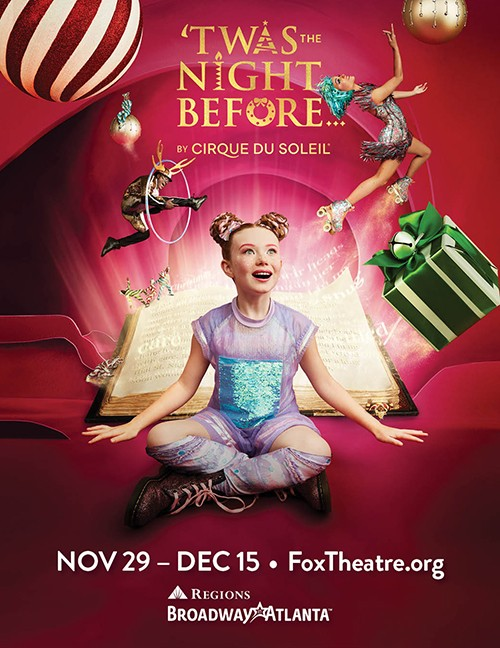
Now - December 15
'Twas The Night Before Christmas By Cirque Du Soleil
Presented by Regions Bank Broadway in Atlanta
This joyful show about the virtues of generosity and friendship promises to leave a lasting impression on families this holiday season.
At The Fox Theatre
660 Peachtree Street NE /
Atlanta, Georgia 30308
Box Office: 855-285-8499

Now - December 23
Mountain Country Christmas
In Lights
Georgia Mountain Fairgrounds
311 Music Hall Rd, Hiawassee, GA 30546,
Transforms into a spectacular, magical holiday light show immersed in Christmas music, arts and crafts, food, fun, entertainment, photo opportunities, and a visit with Santa Claus!
(706) 896-4191

Now - January 5
Stone Mountain Park Christmas
At Stone Mountain Park
Each day during Stone Mountain Christmas, you can enjoy park attractions and then as the sun sets, become immersed in holiday magic with evenings full of festive music, millions of dazzling lights, spectacular shows and visits from some of your favorite holiday characters! (800) 401-2407

Now - January 6th - Dollywood Smoky Mountain Christmas
2700 Dollywood Parks Blvd.
Pigeon Forge, TN 37863
1-800-DOLLYWOOD
Celebrate the season with the return of America's Best Christmas Event
for more than a decade!
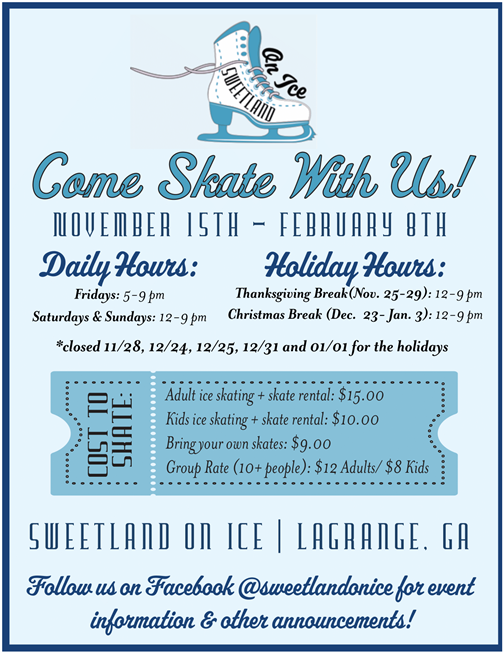
Now - February 8
Sweetland On Ice
110 Smith Street,
LaGrange, GA 30240,
During our winter season, Sweetland Amphitheatre hosts a covered 5,500 square foot open-air ice-skating rink. Bring your family & friends to enjoy the festive atmosphere, skating for all ages, a spectator section with heaters to enjoy the ice-skating action, and affordable concessions.(706) 883-2058

 ~
~ 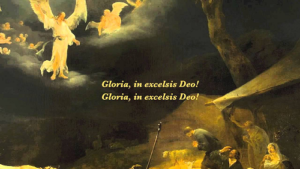

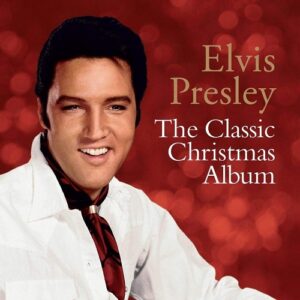













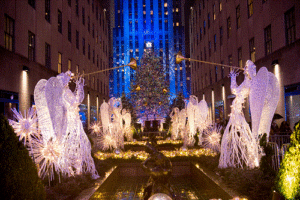











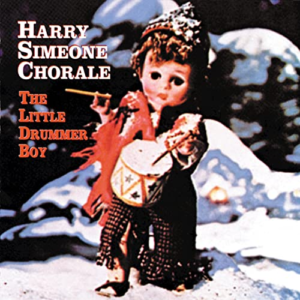

















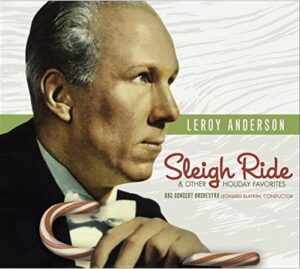

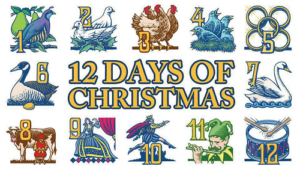
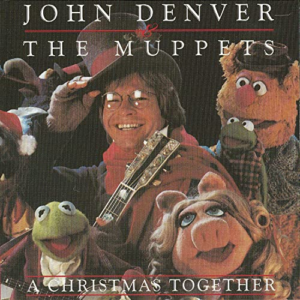

 ~
~ 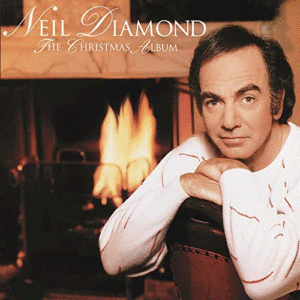




 ~
~ 